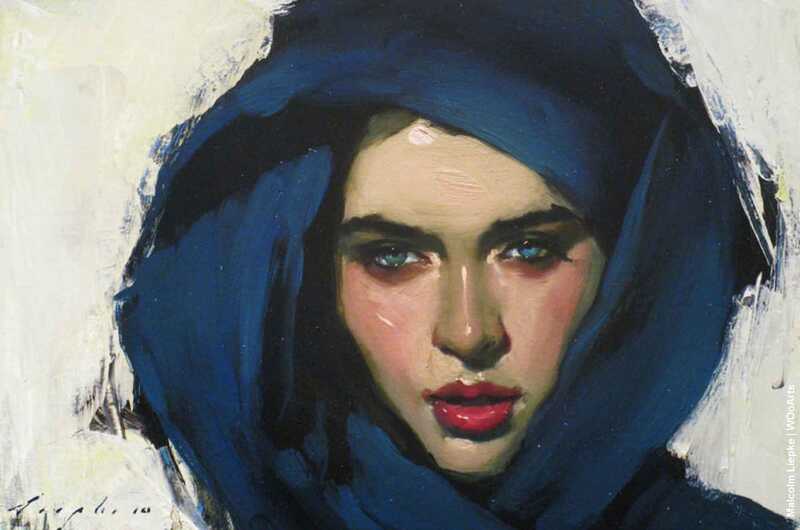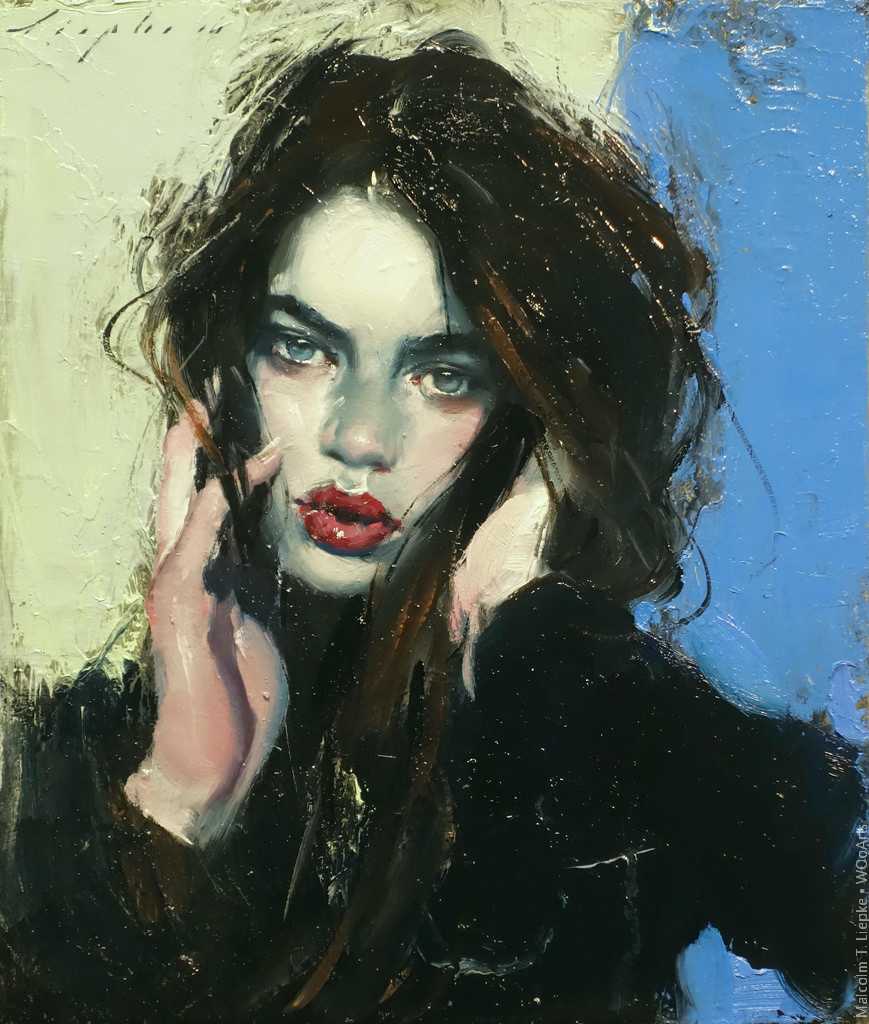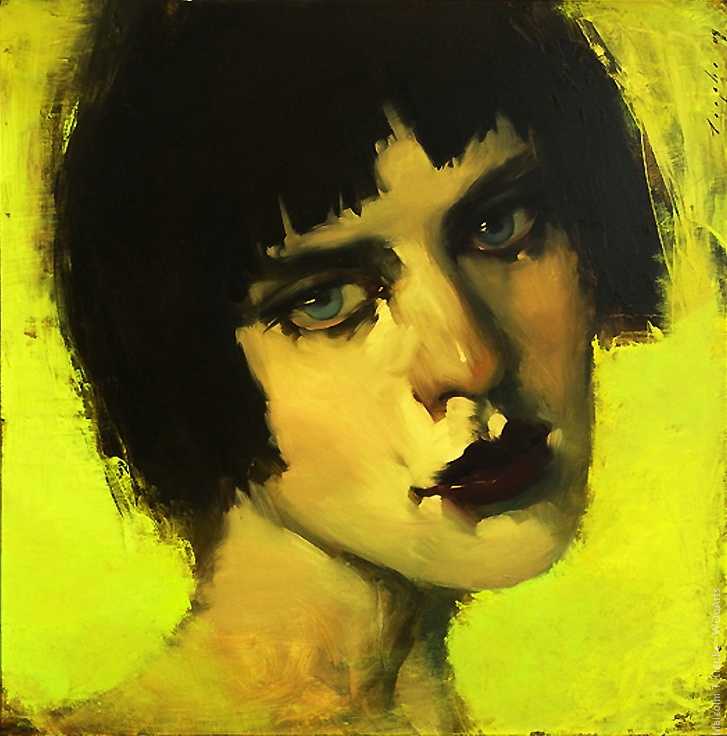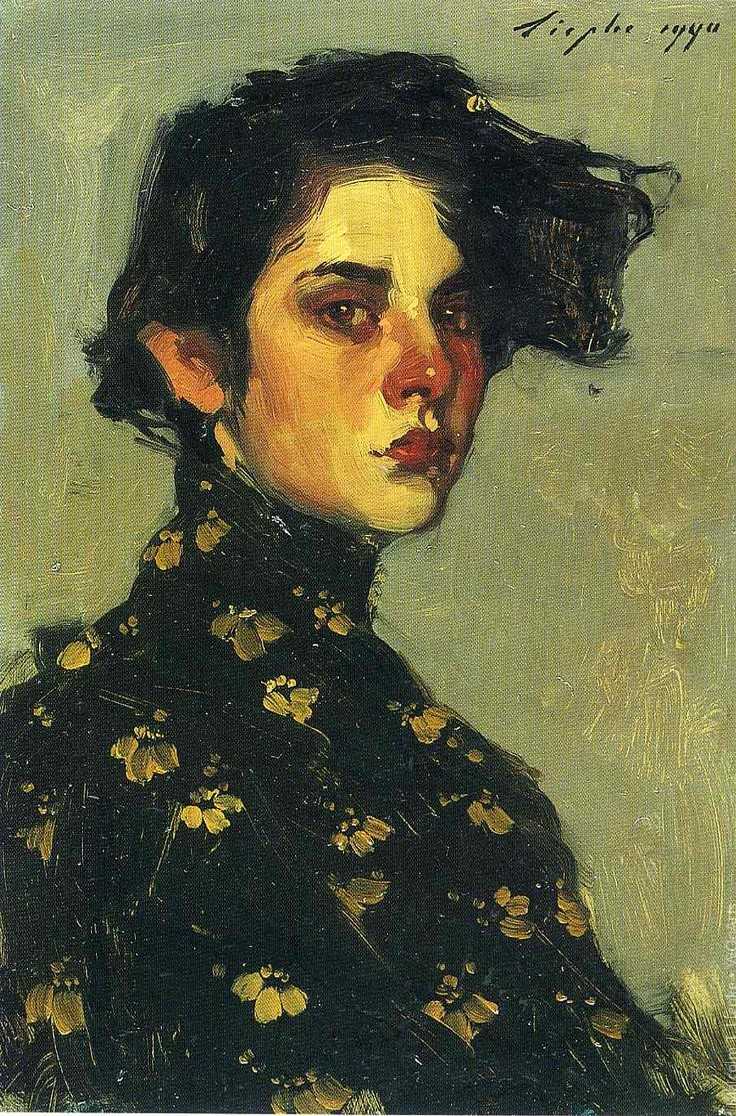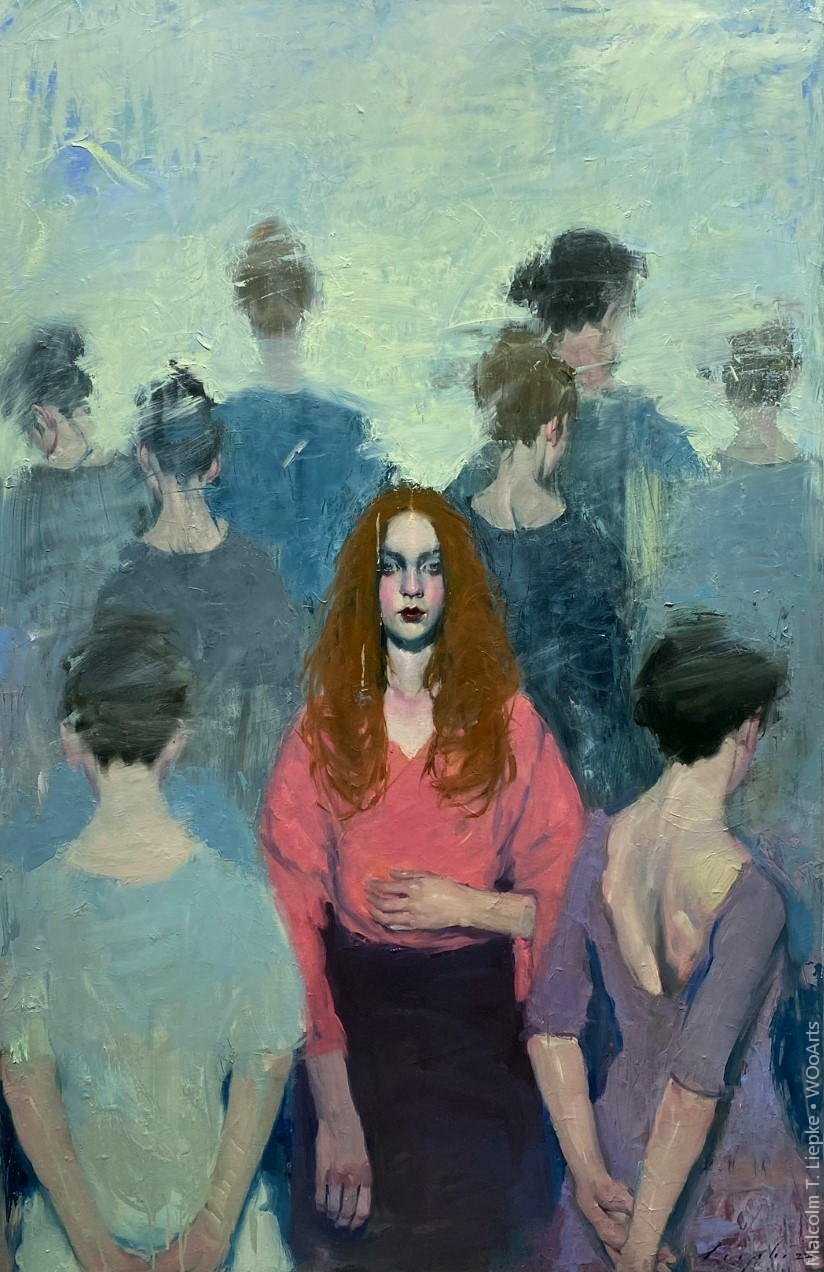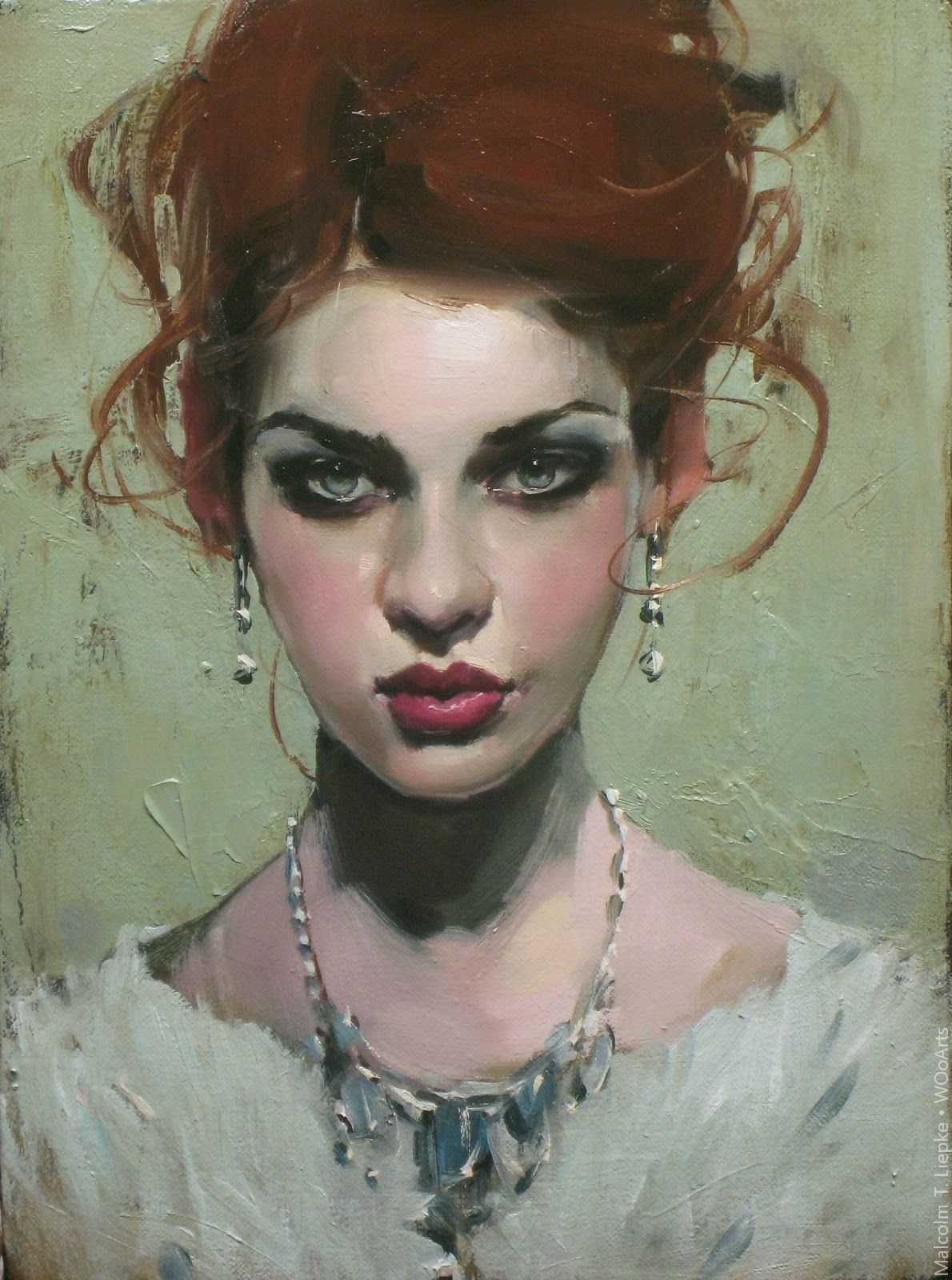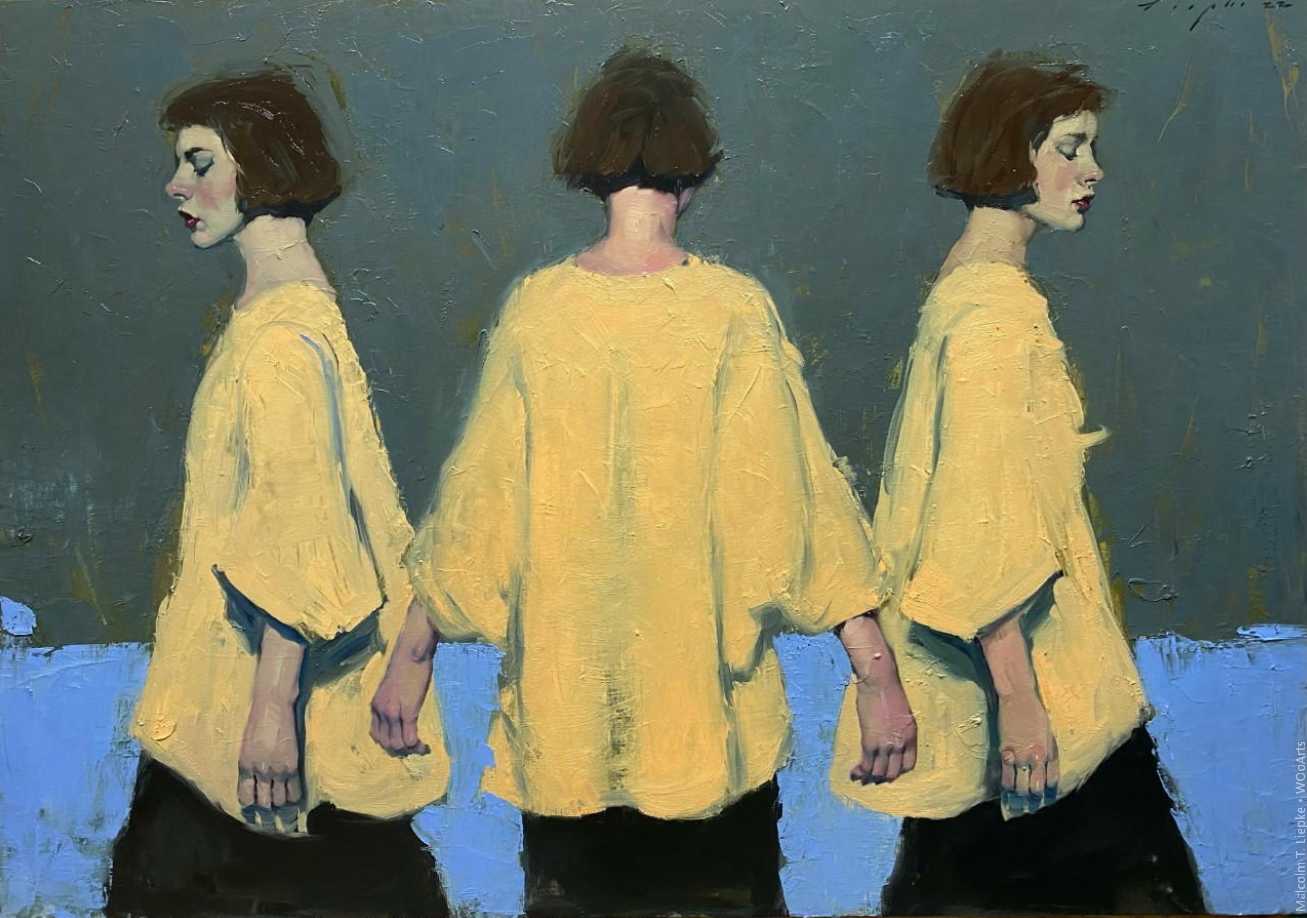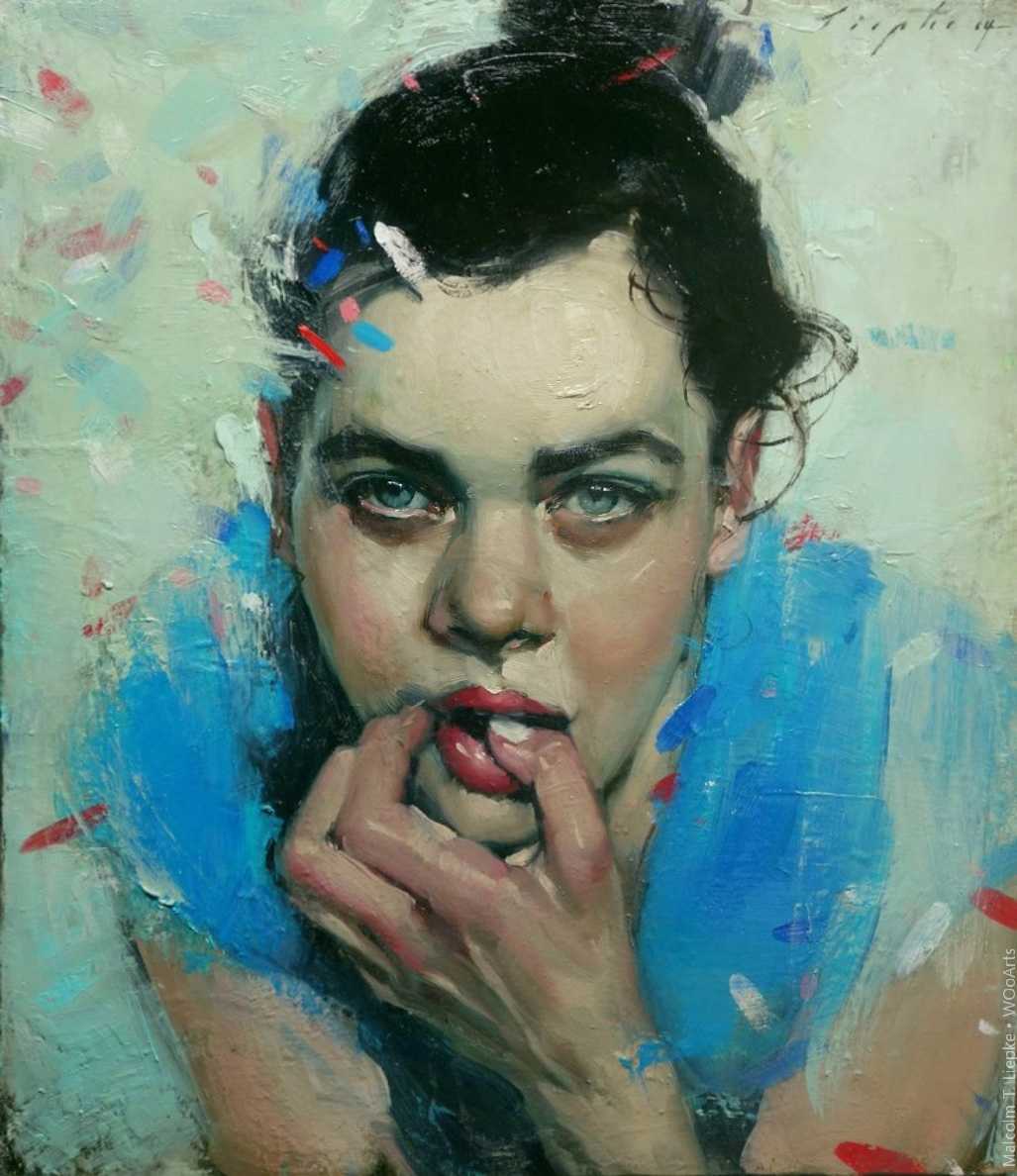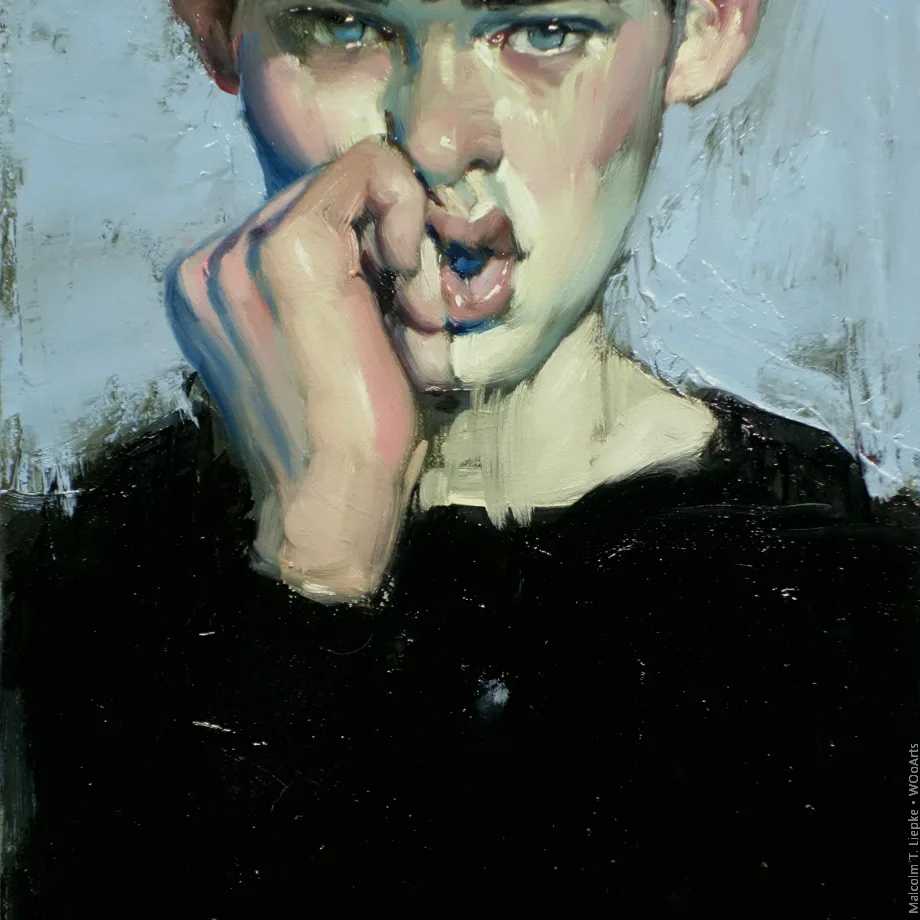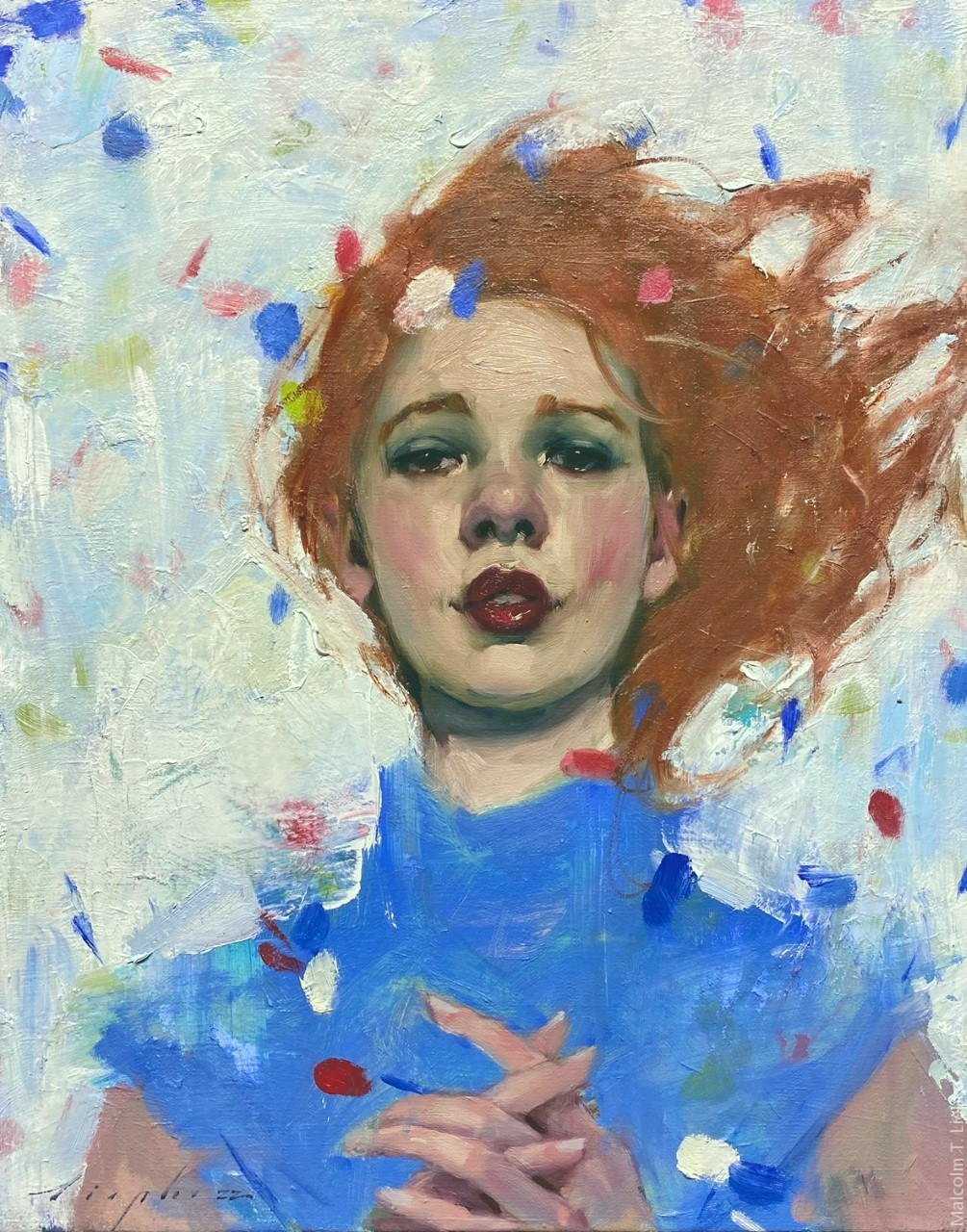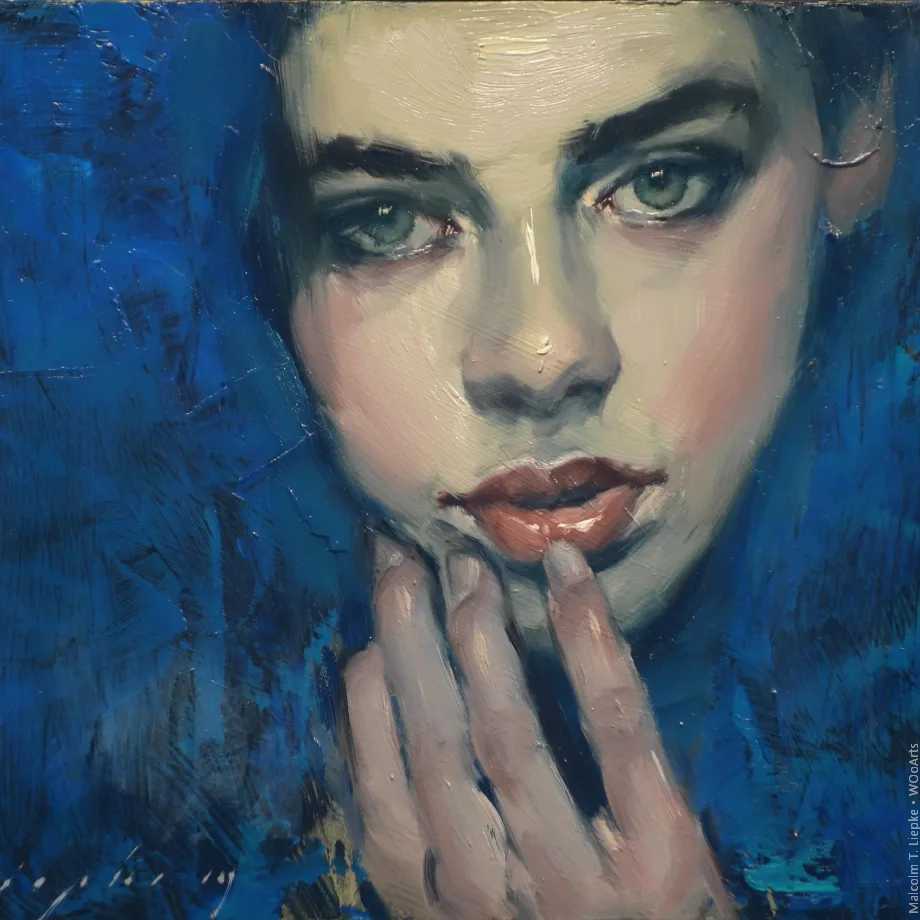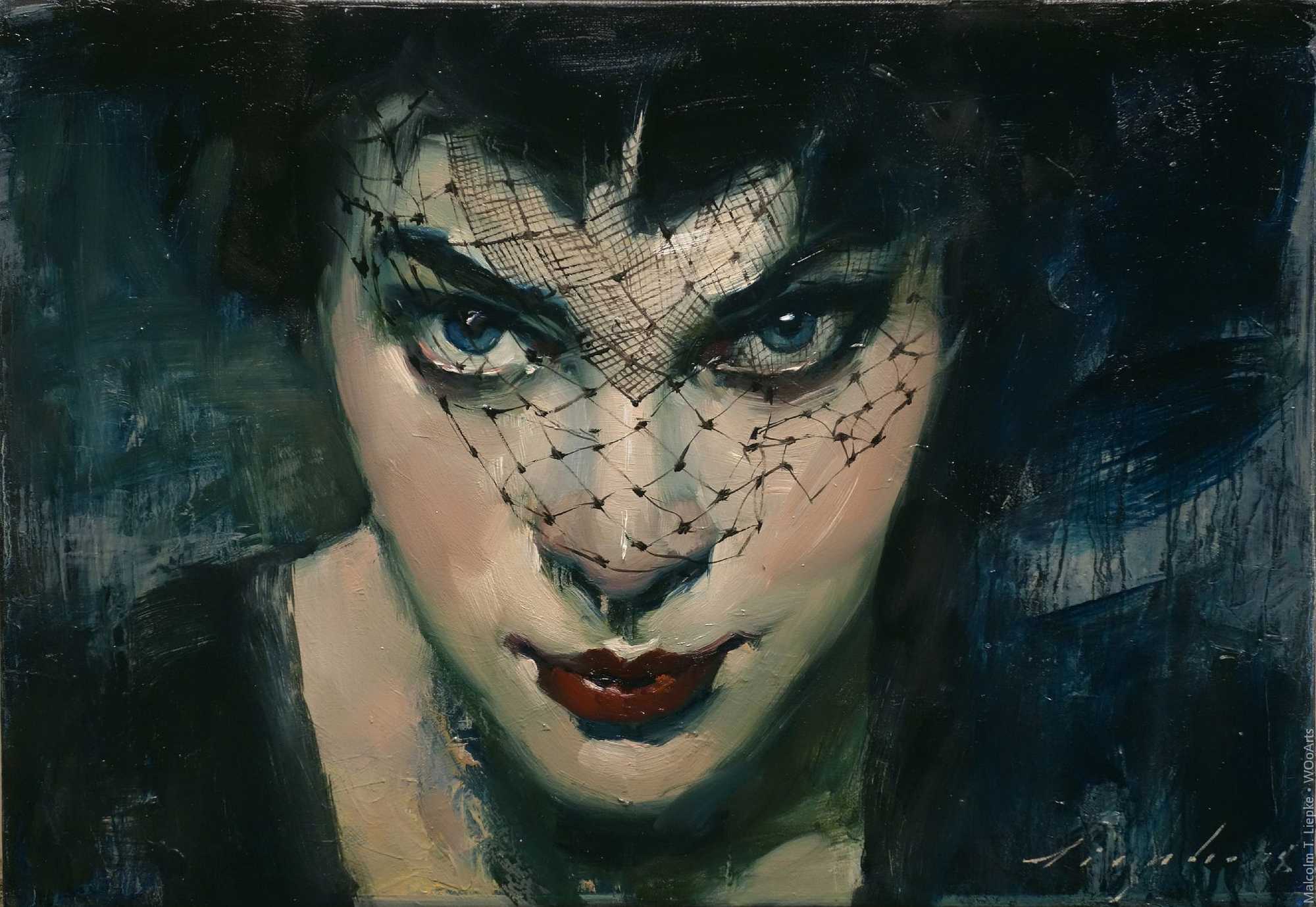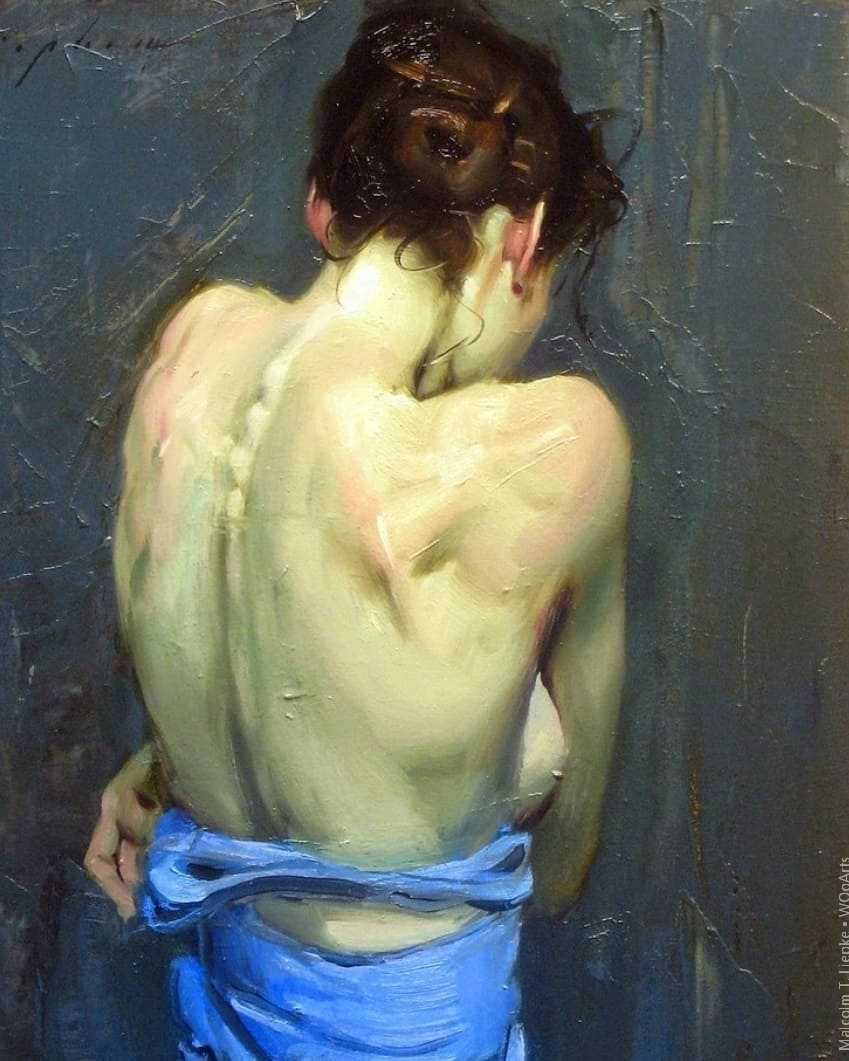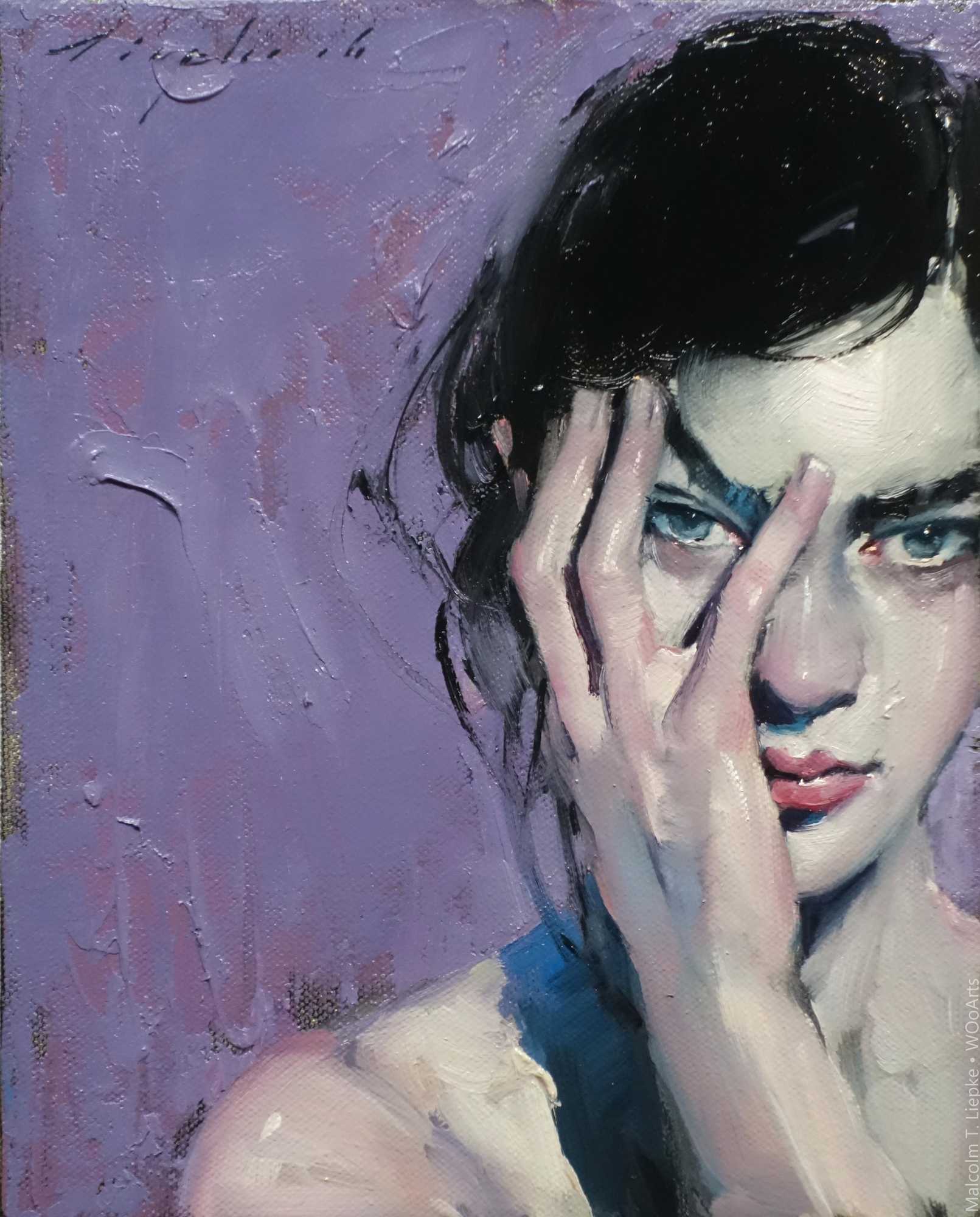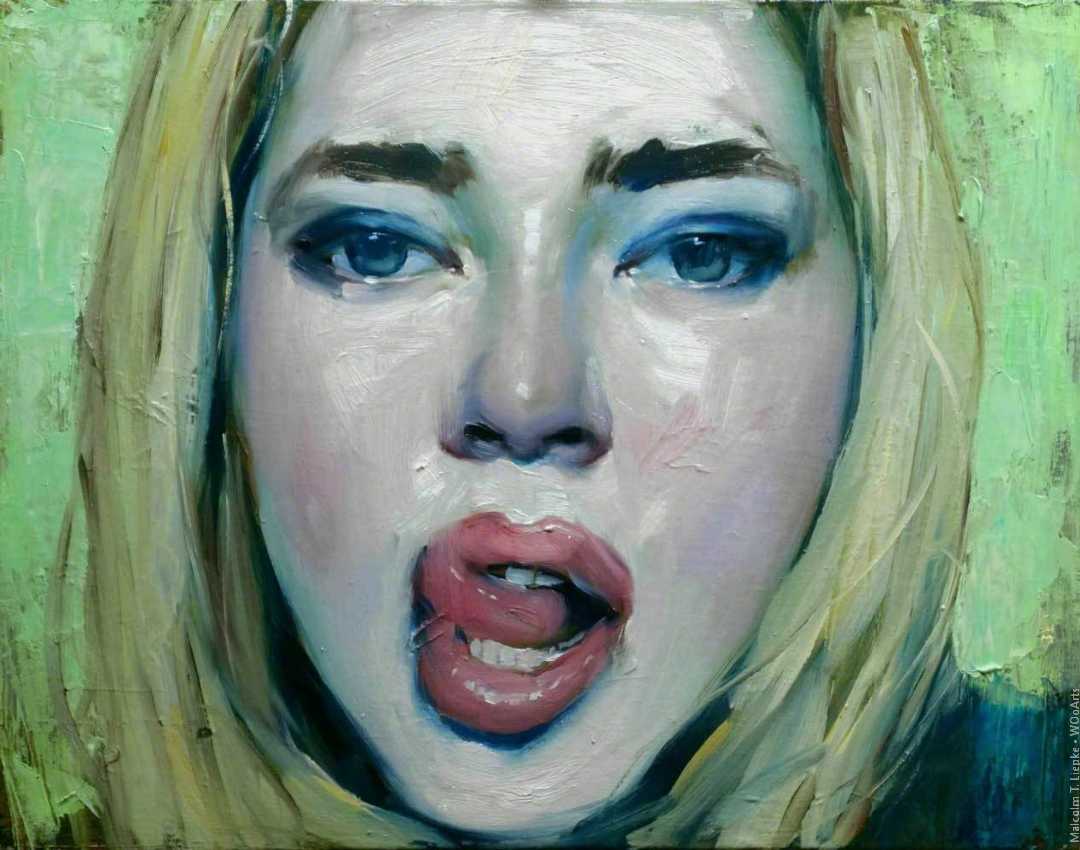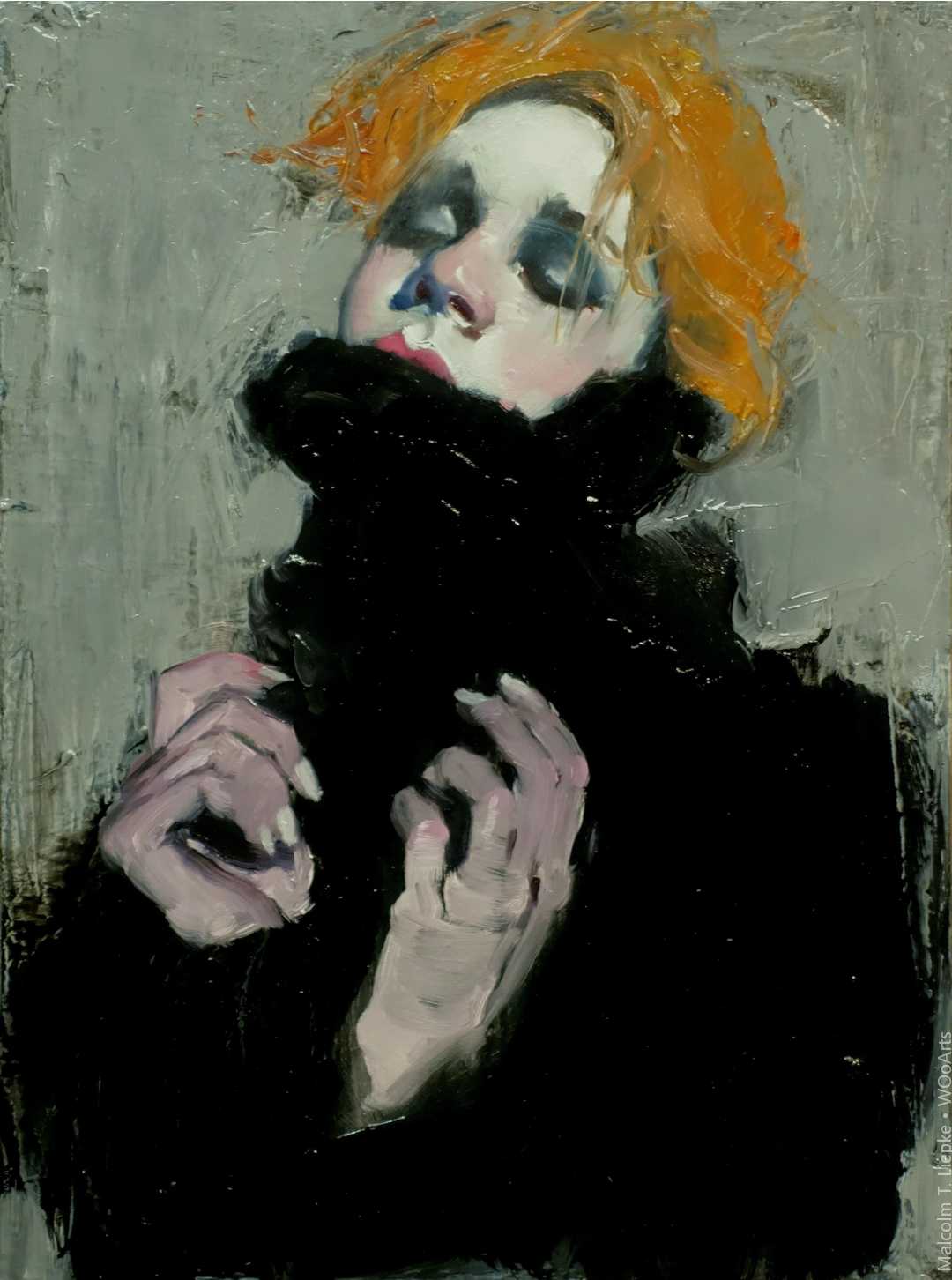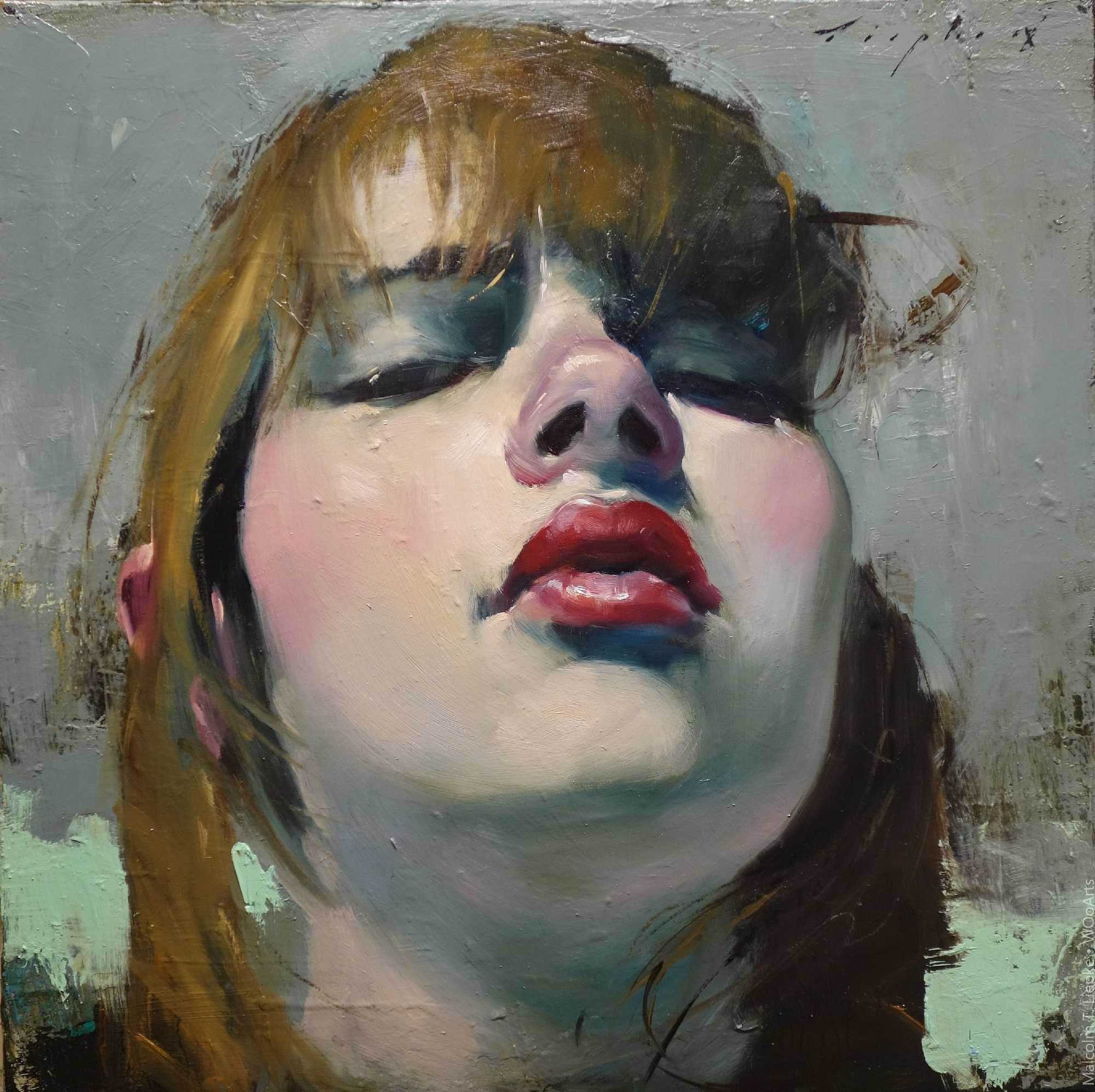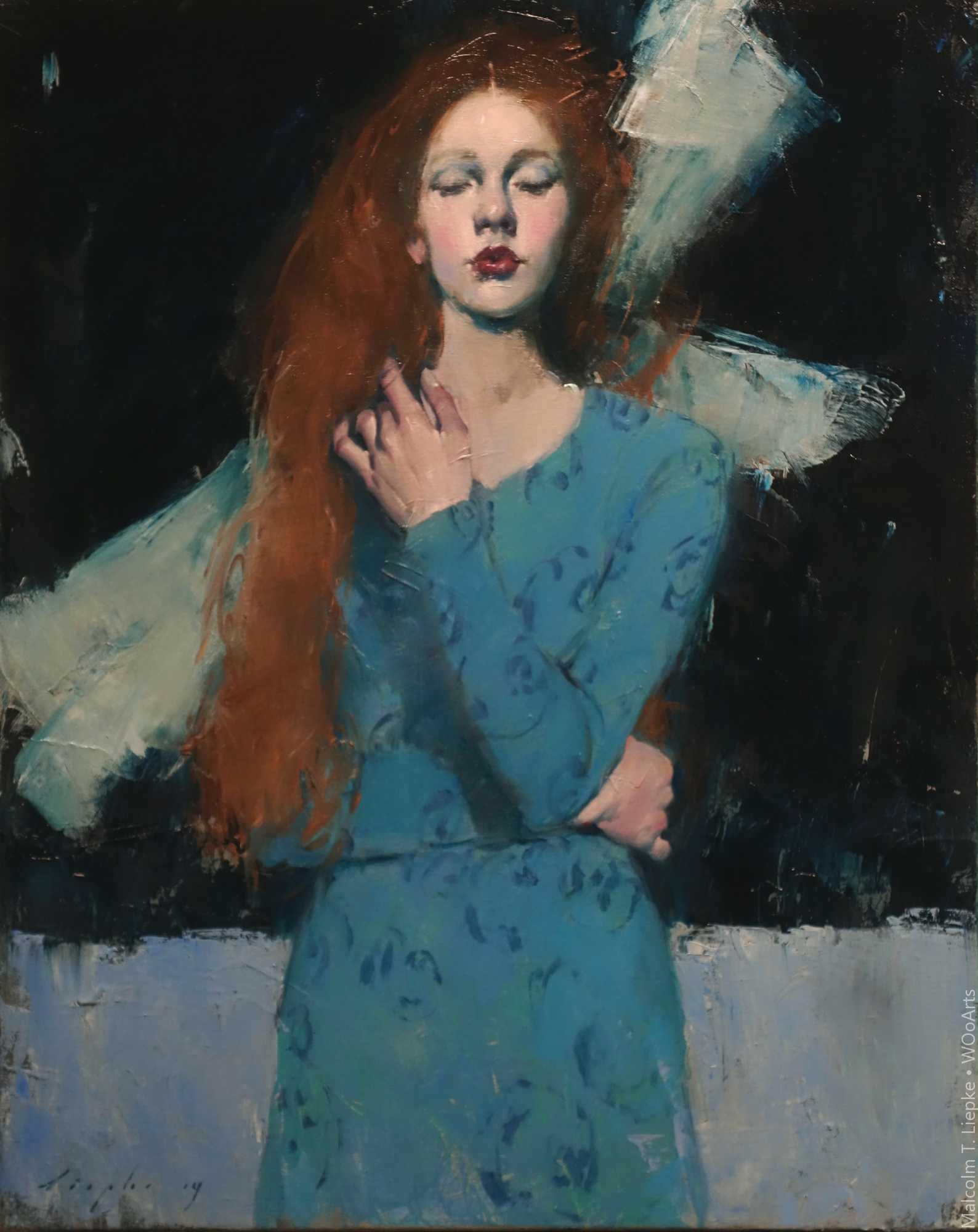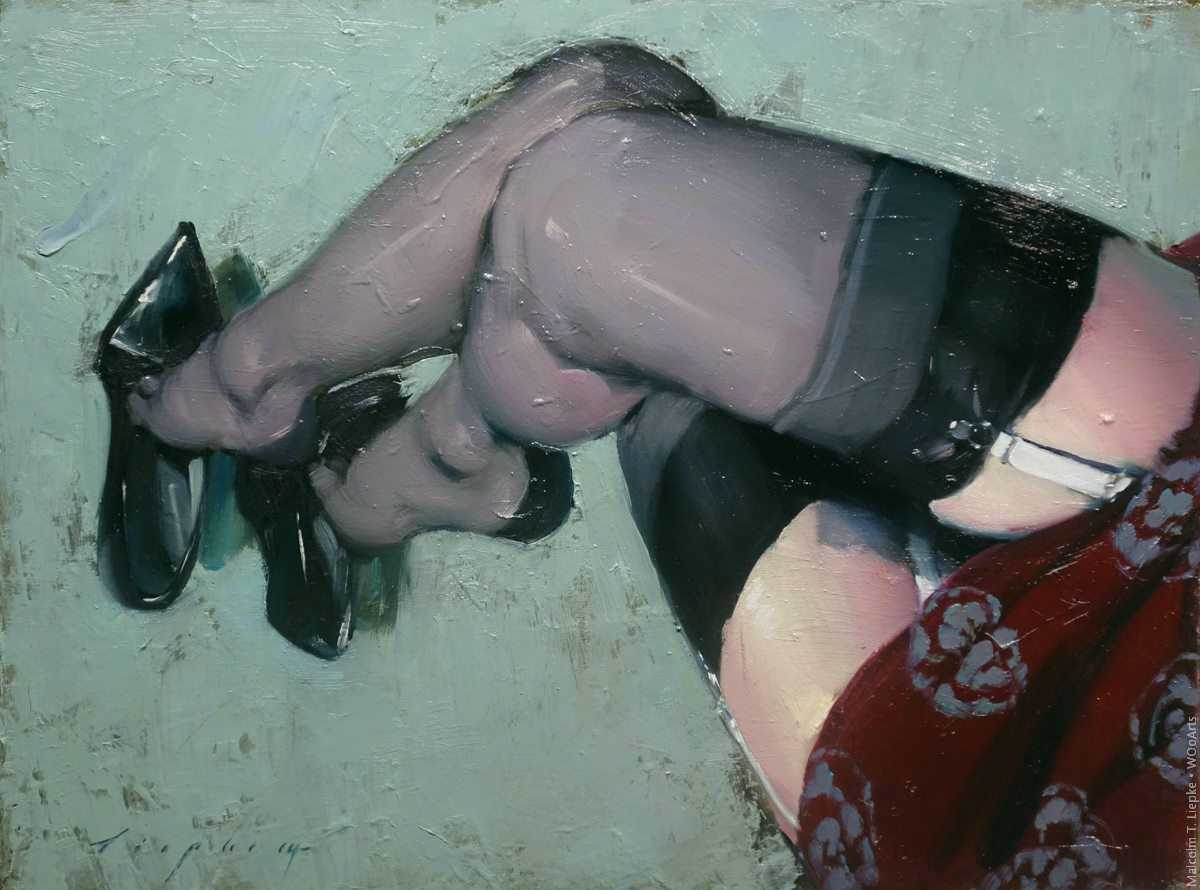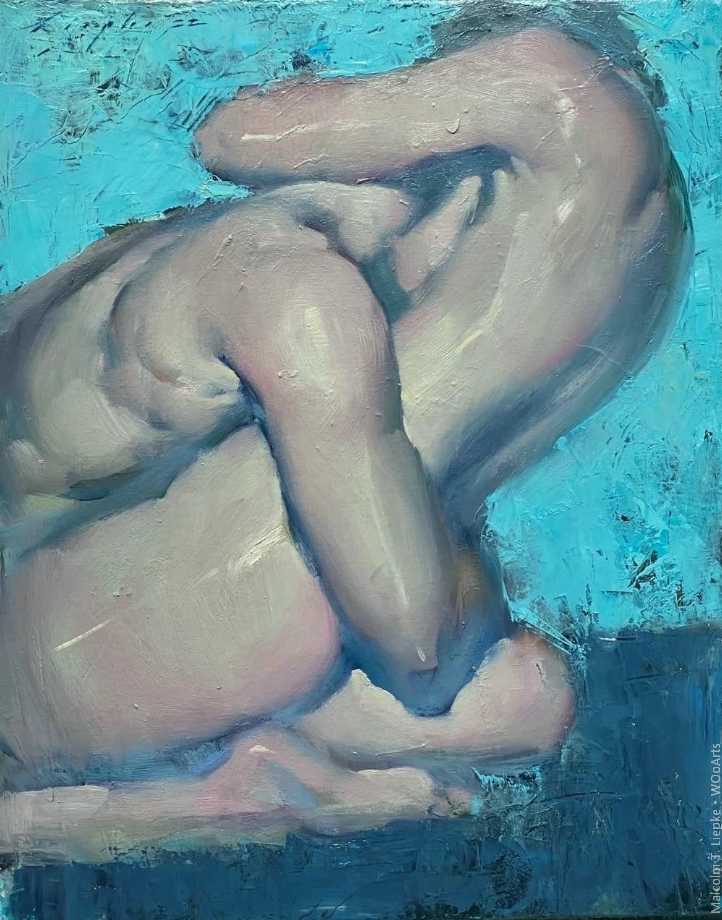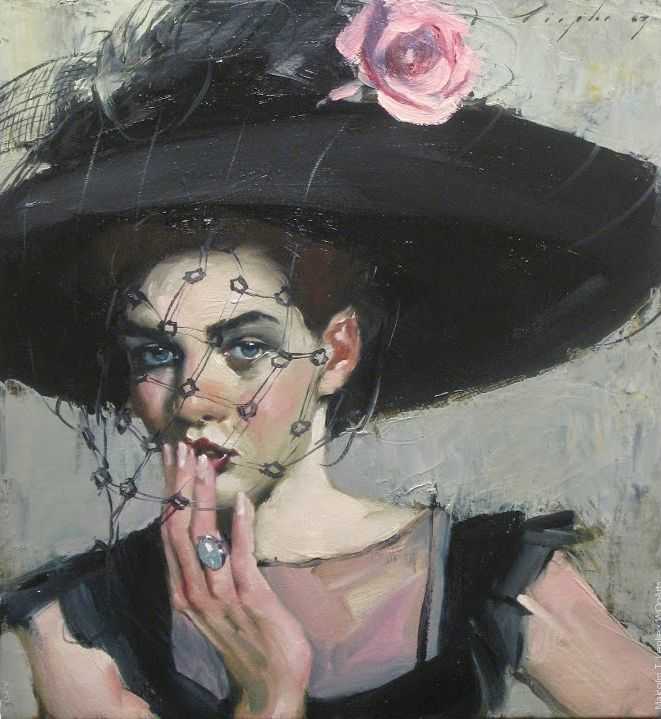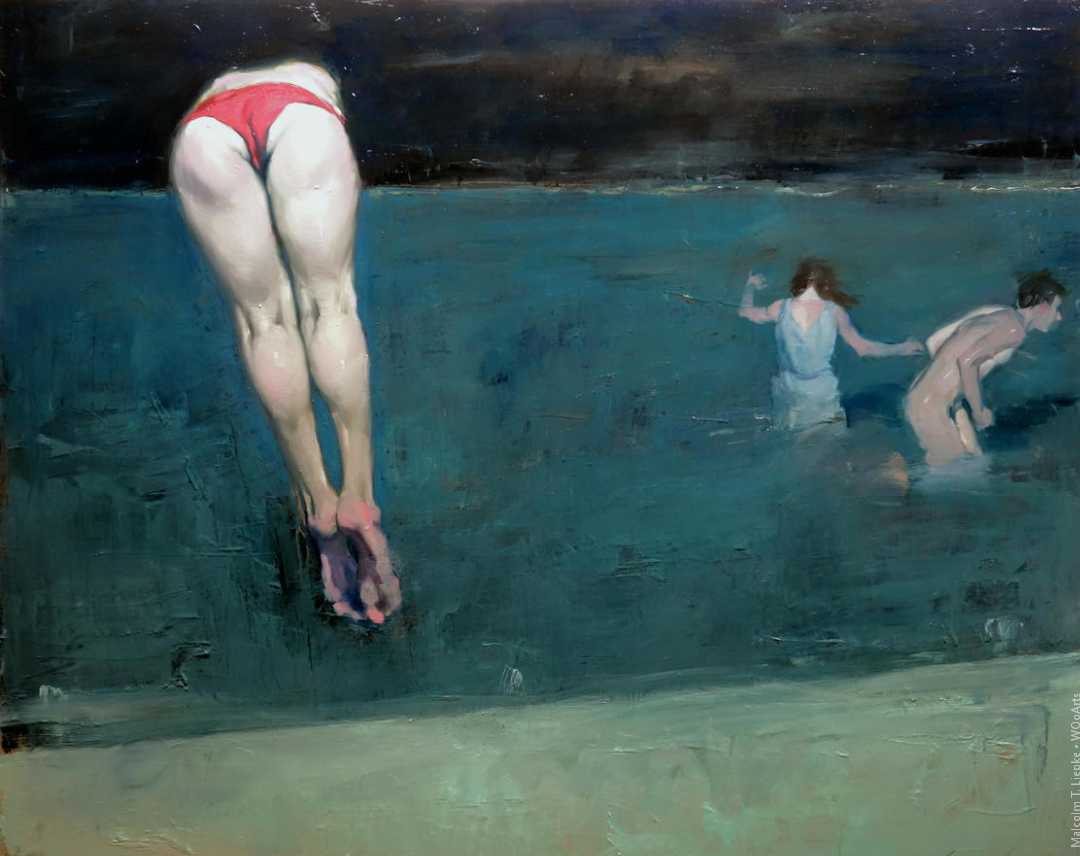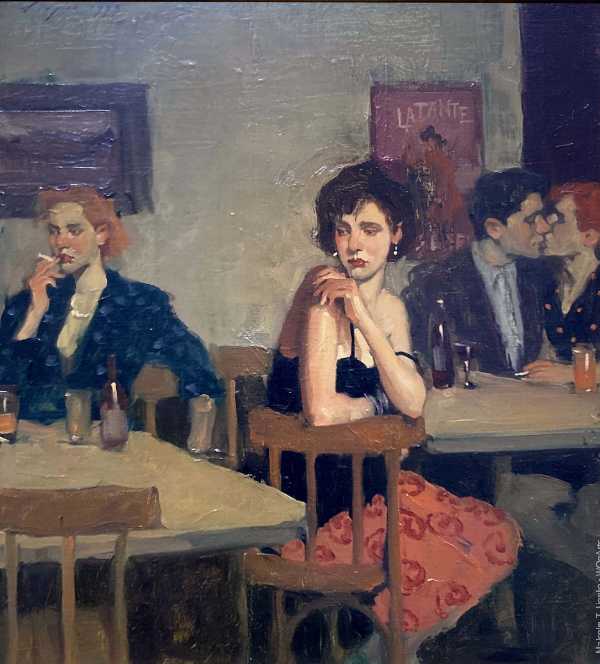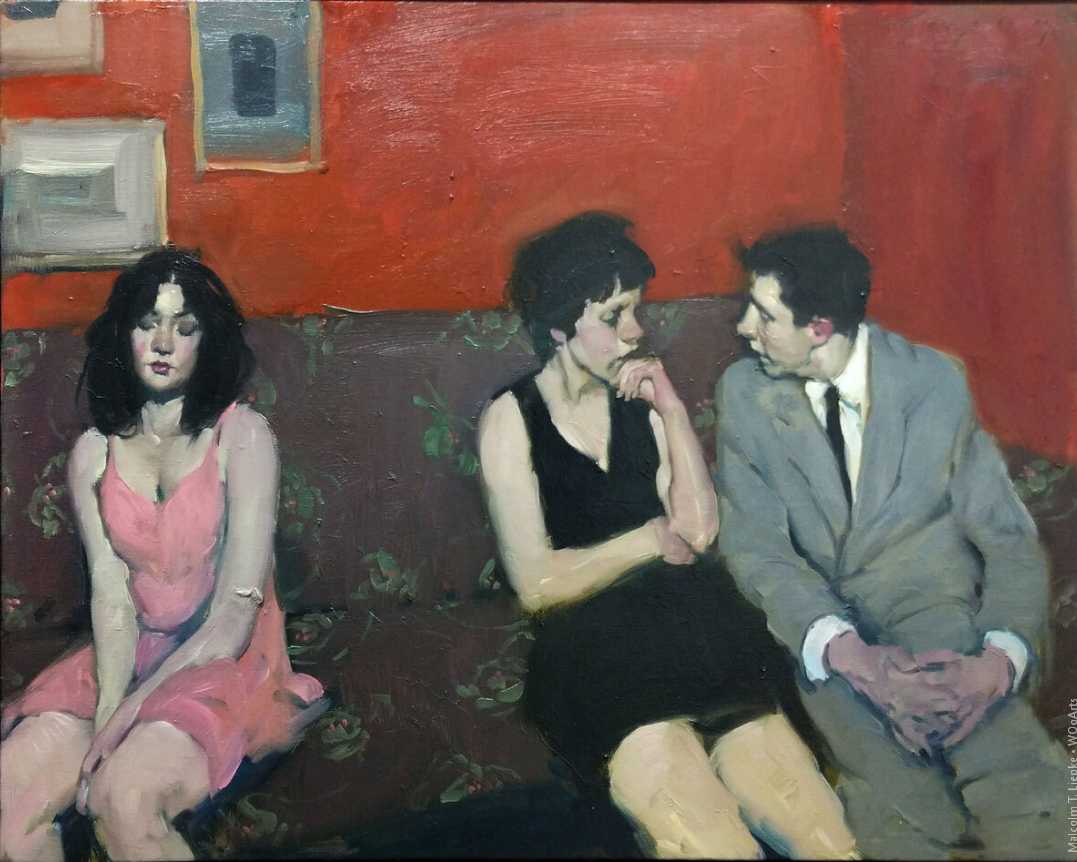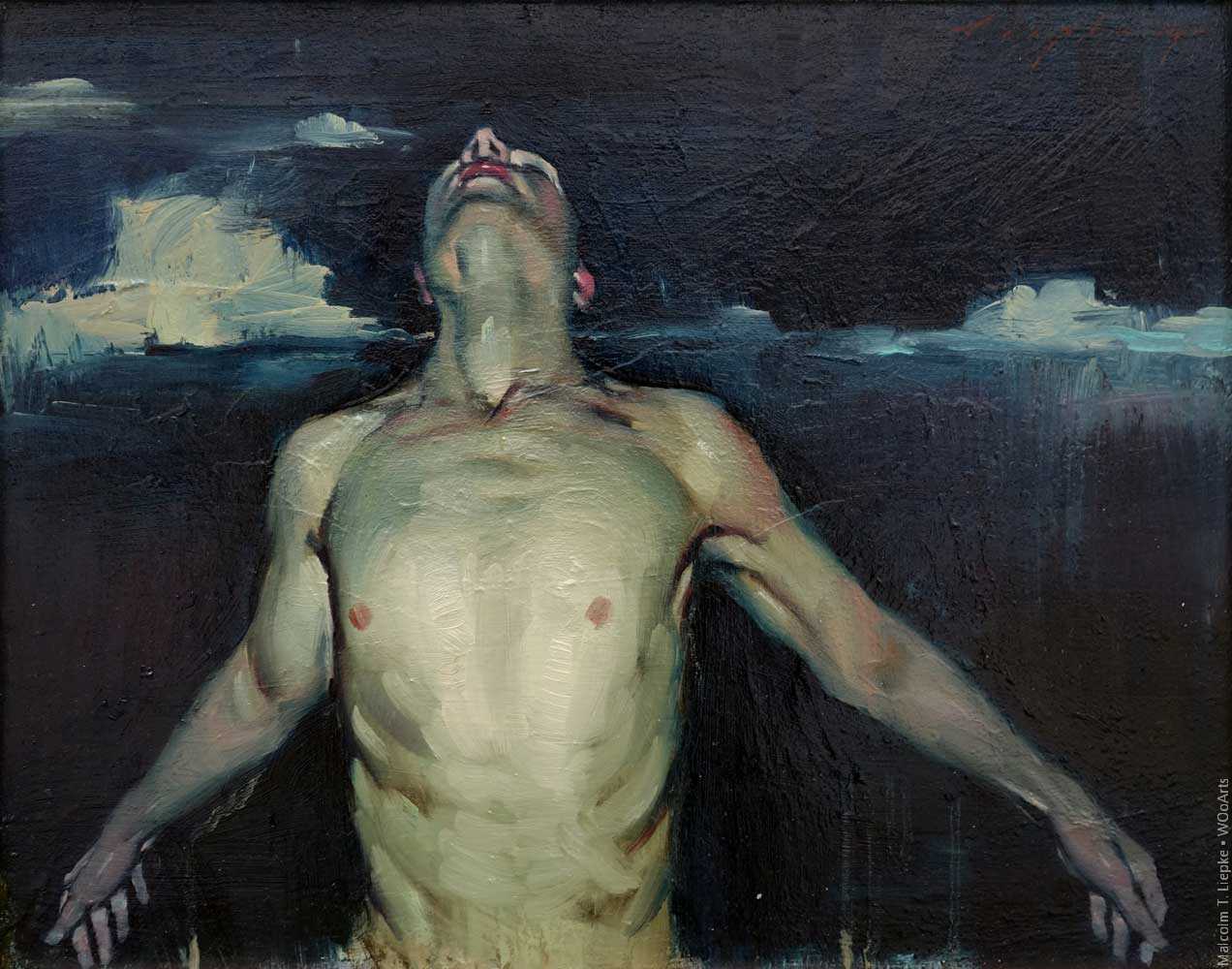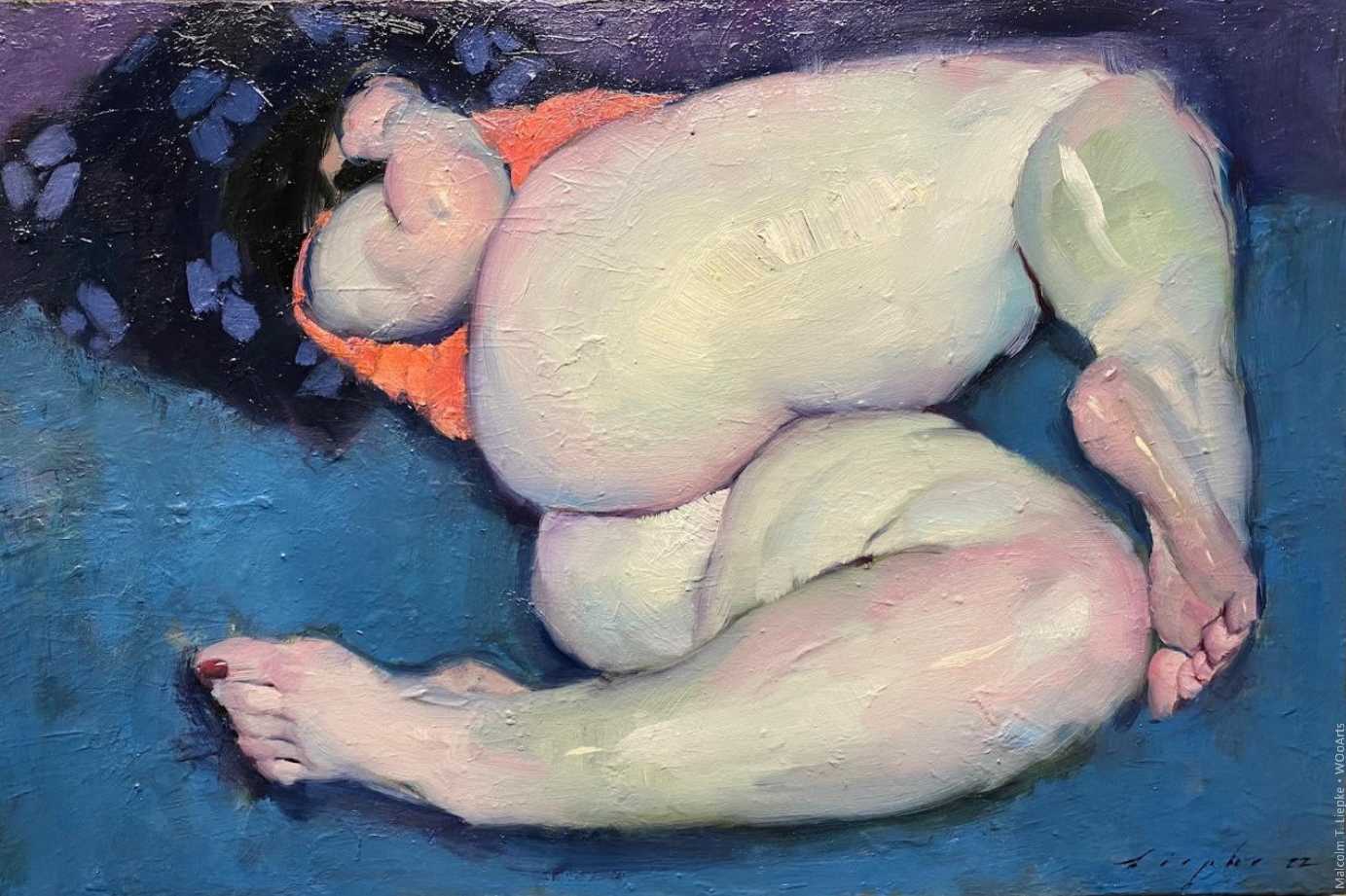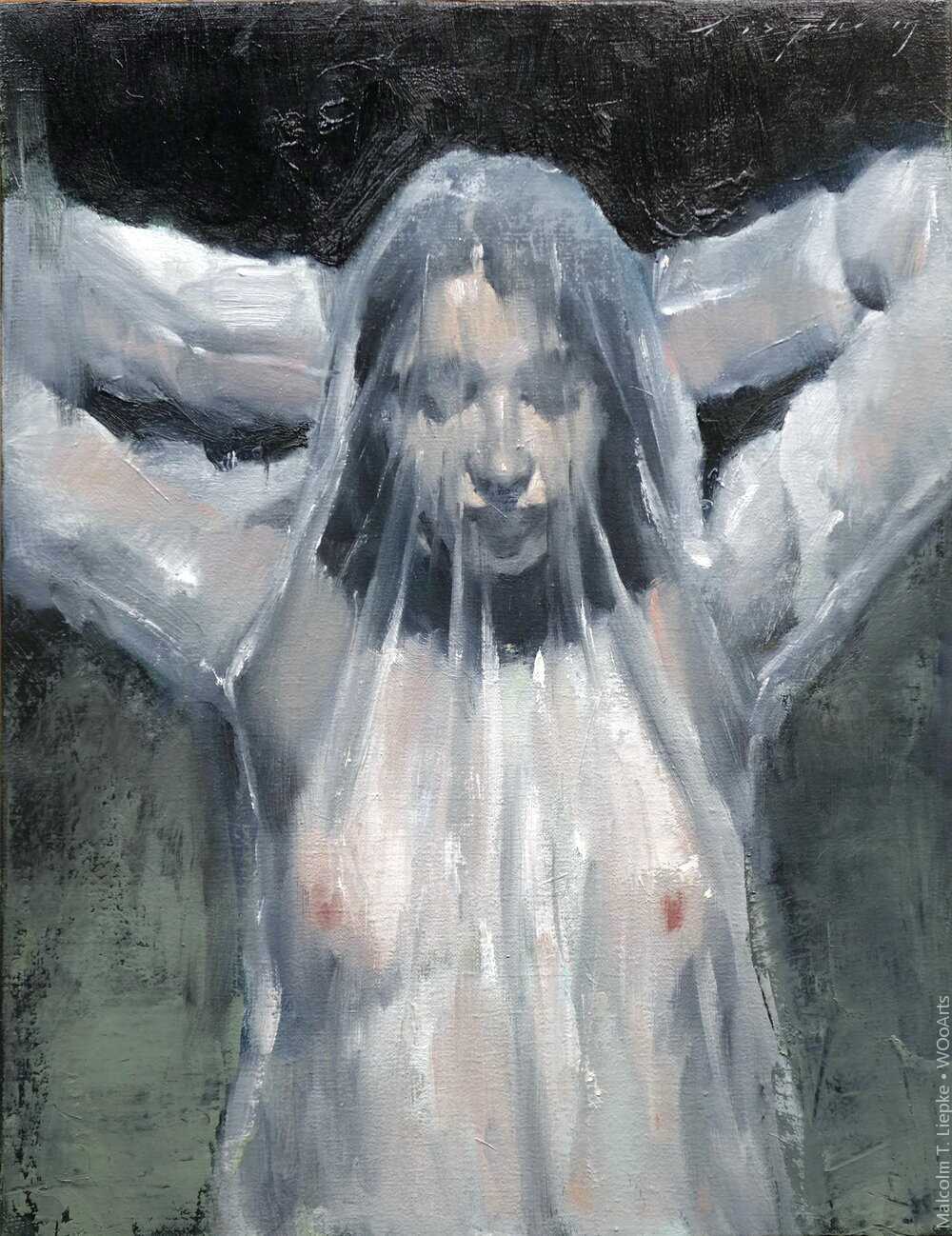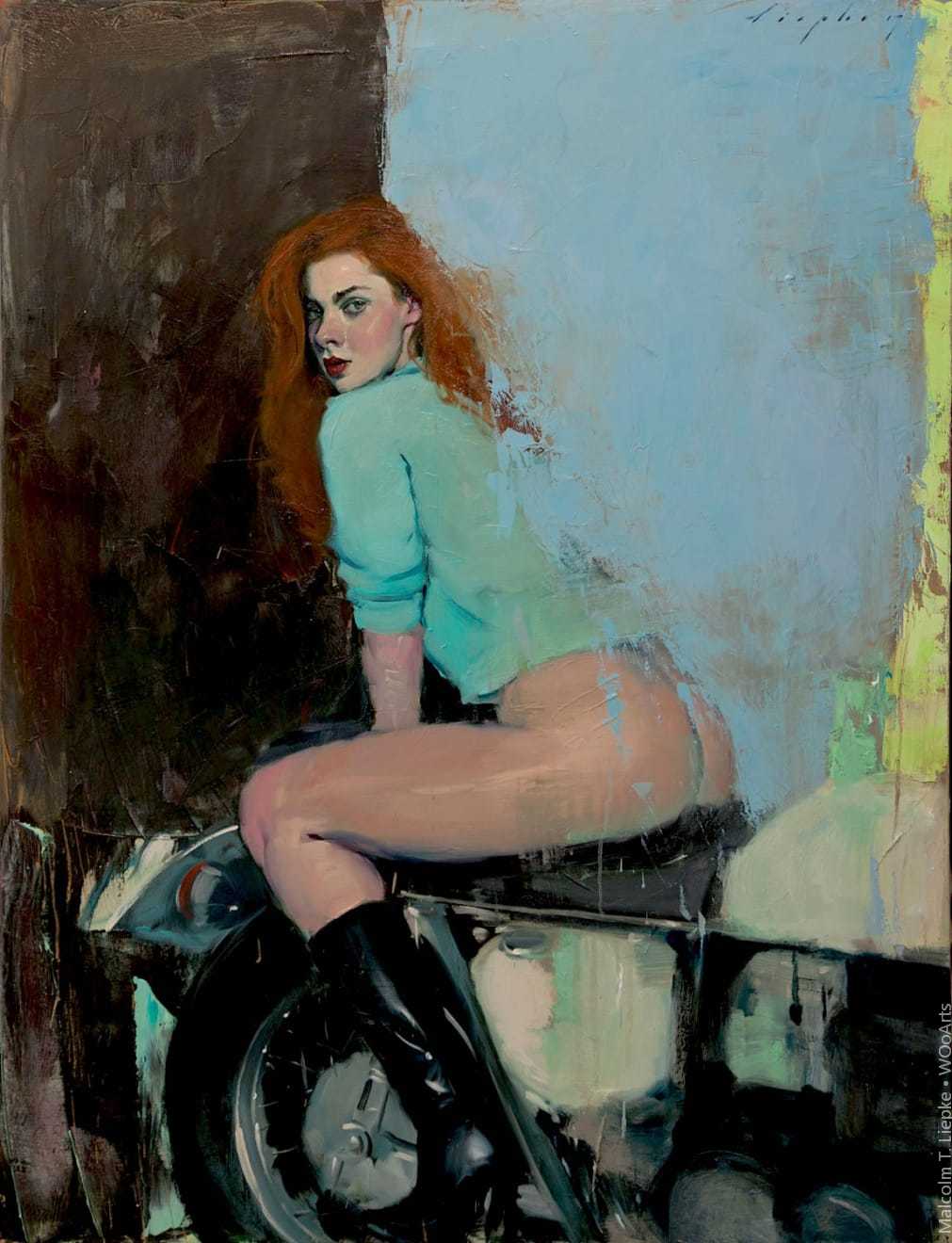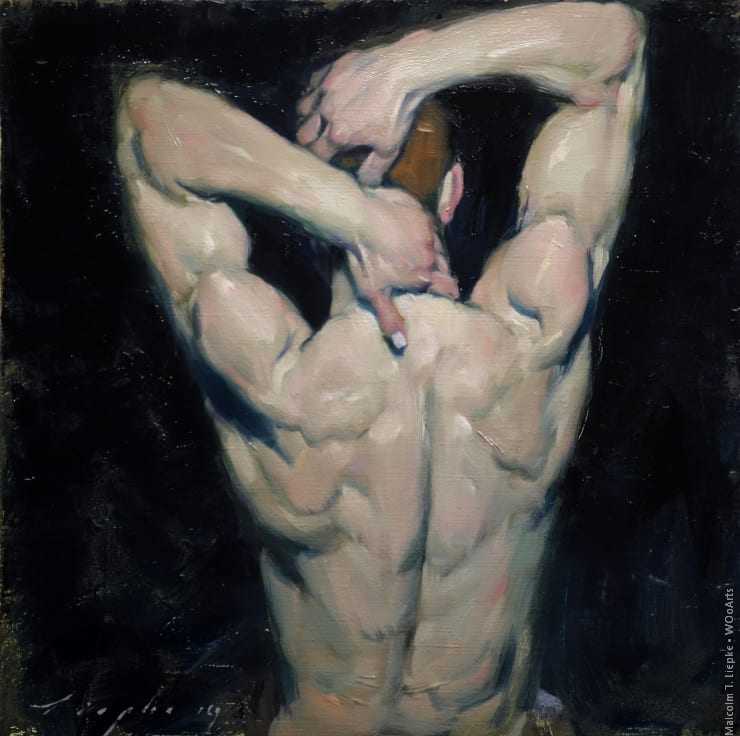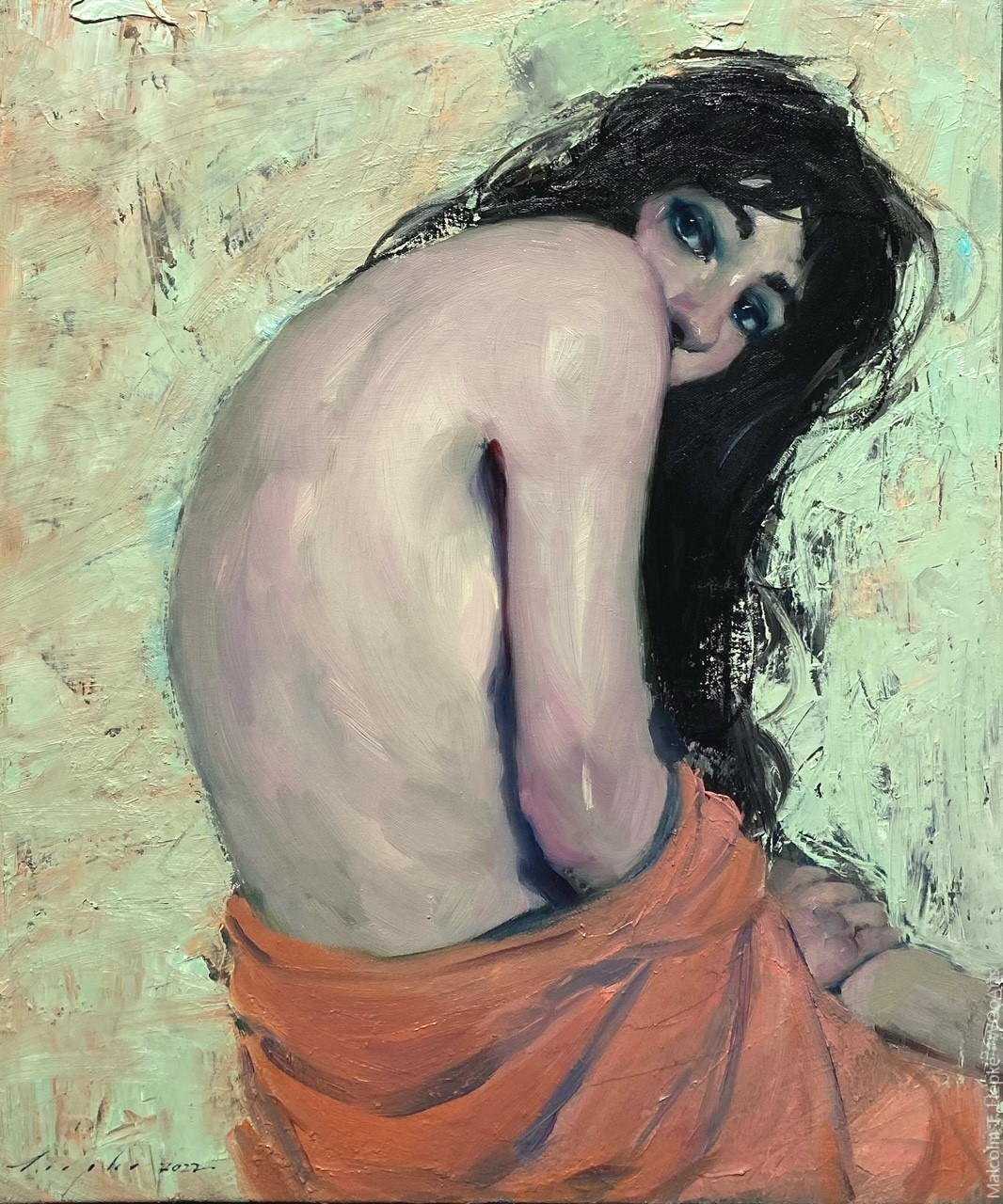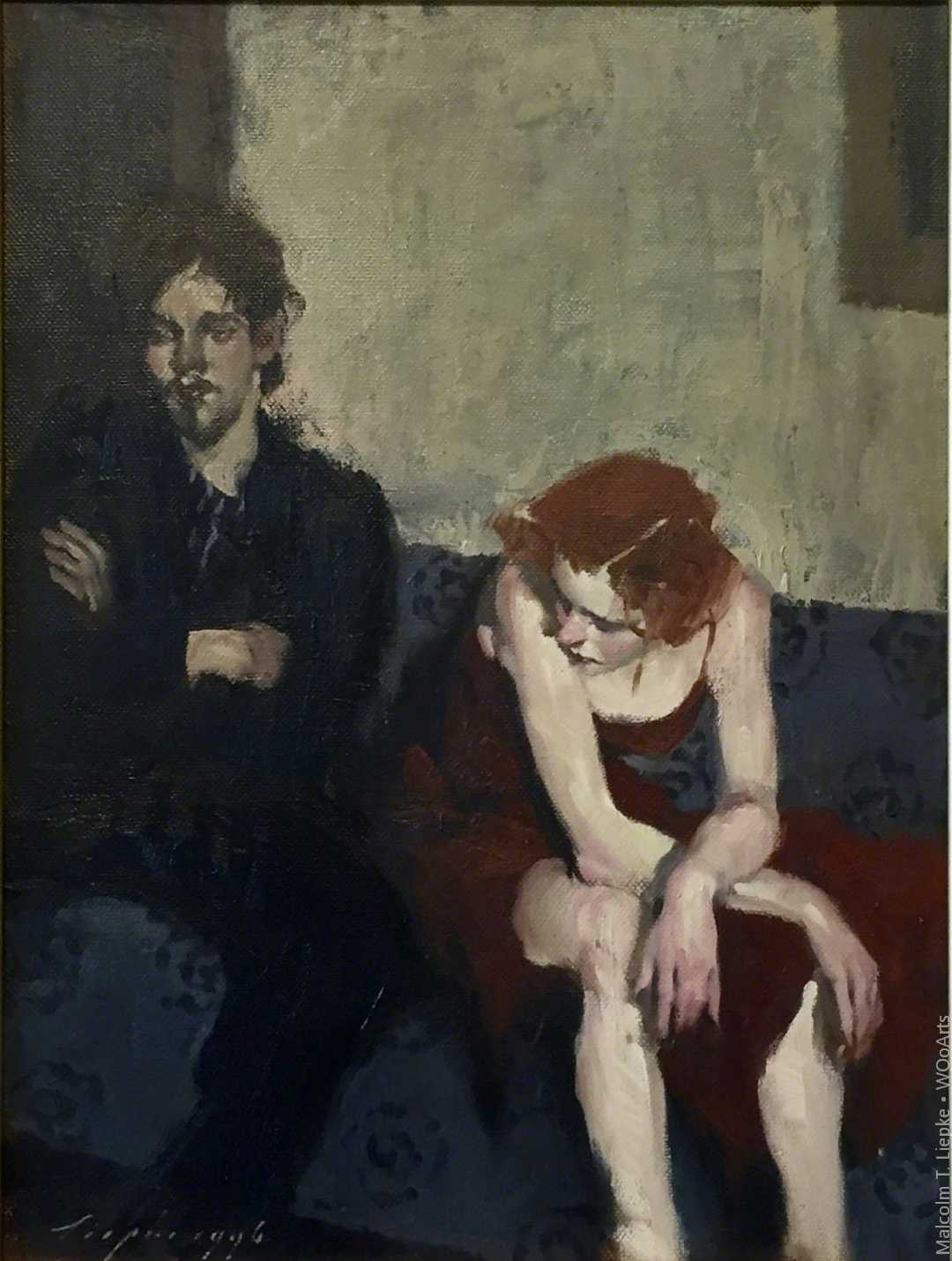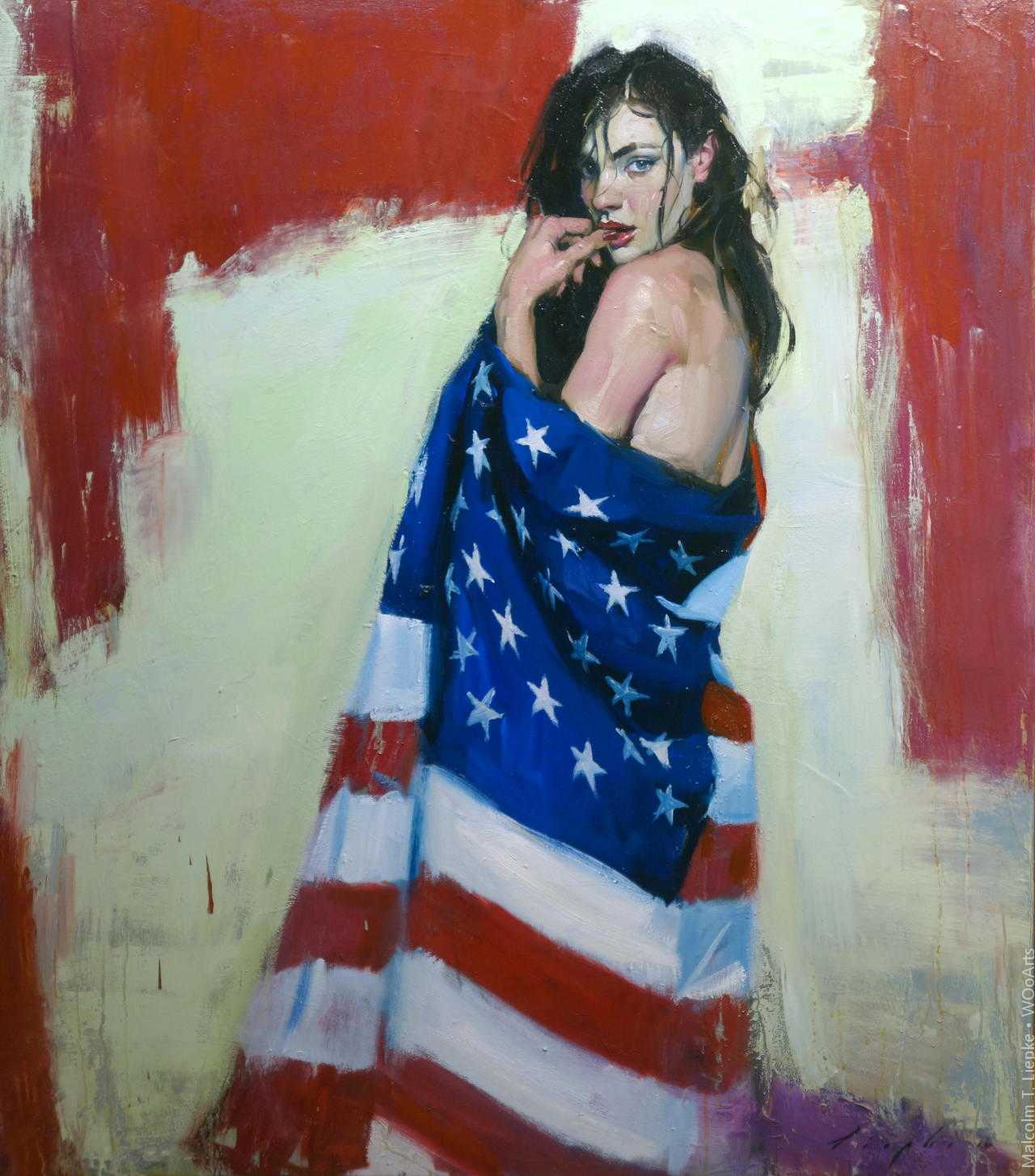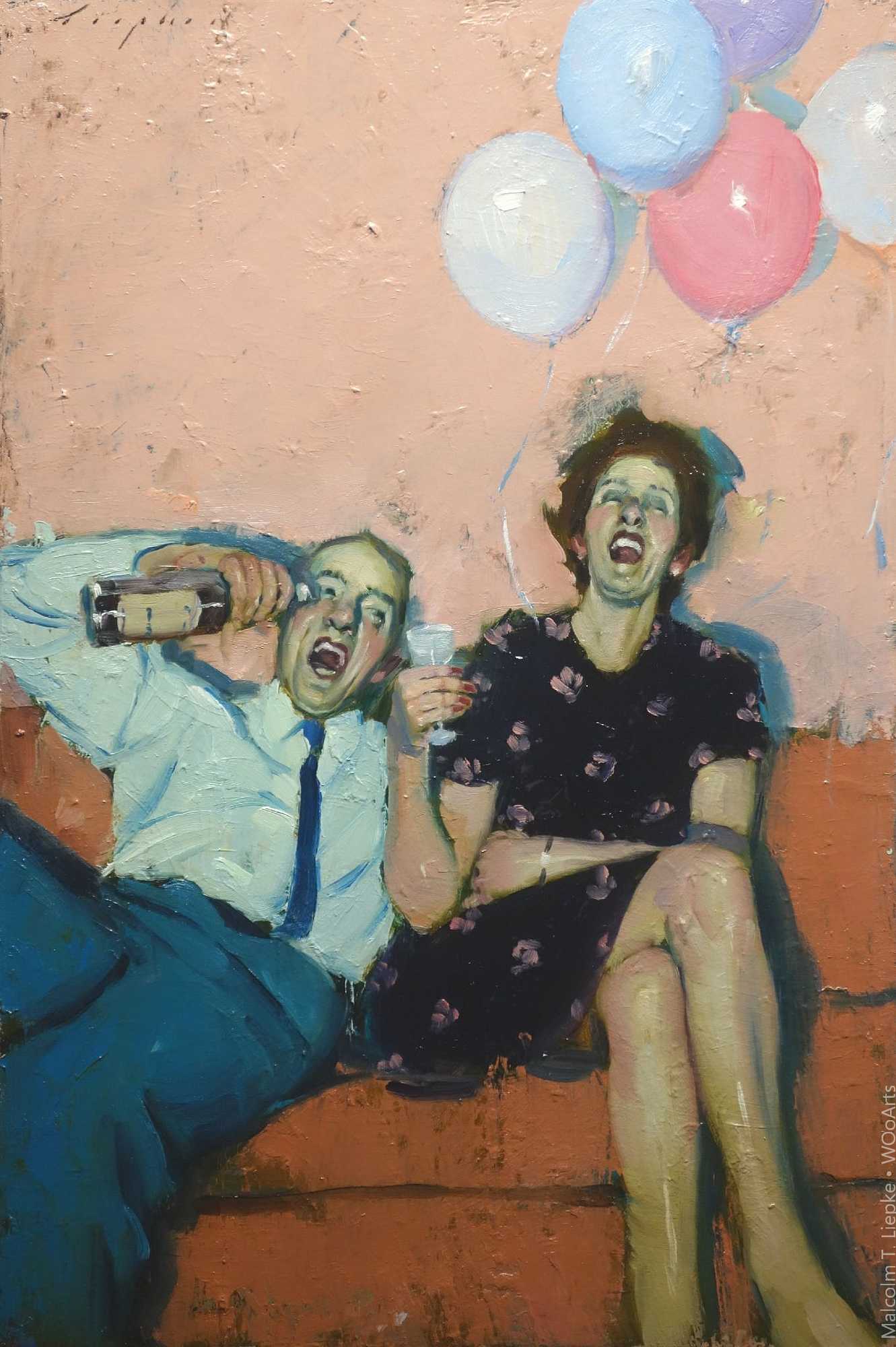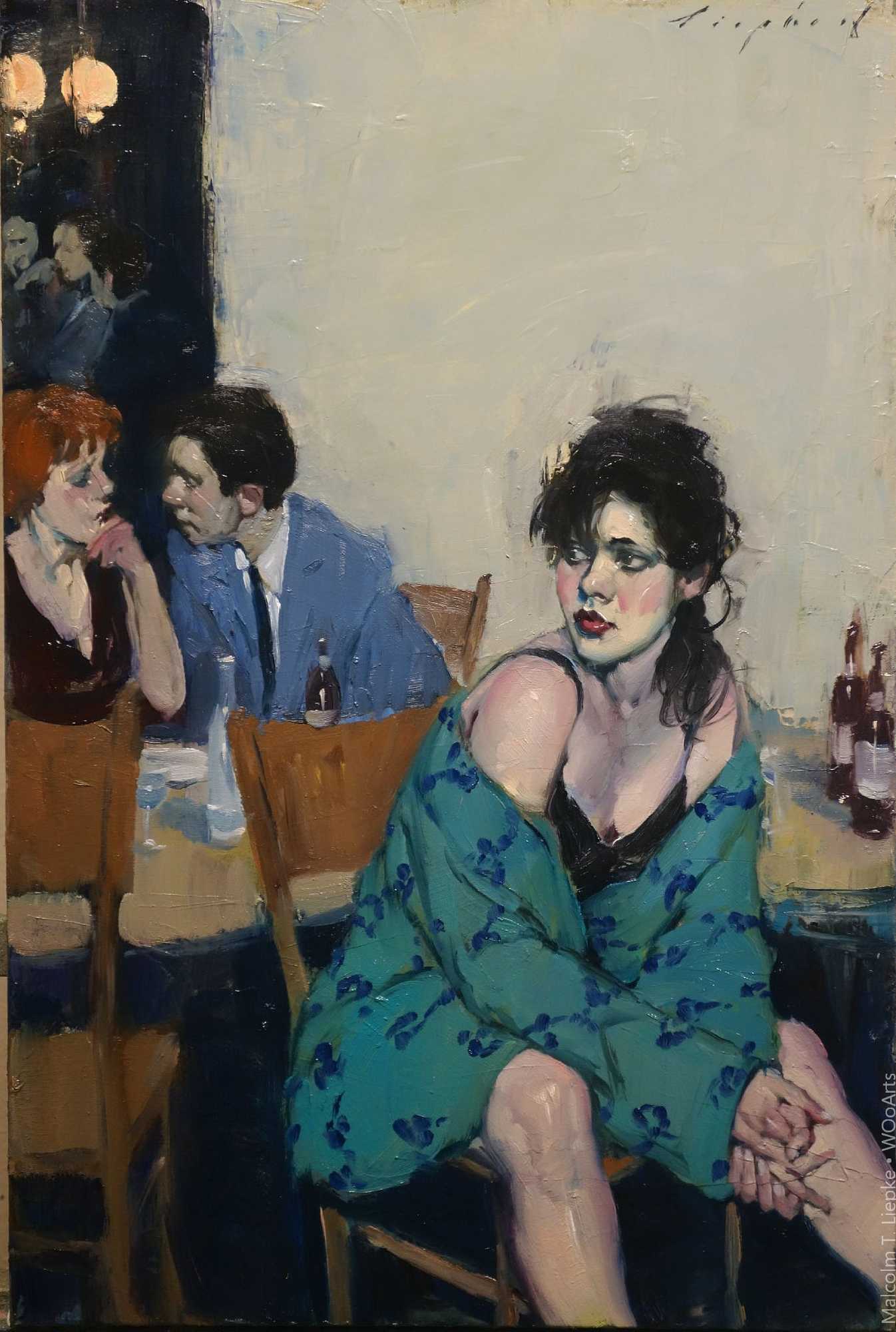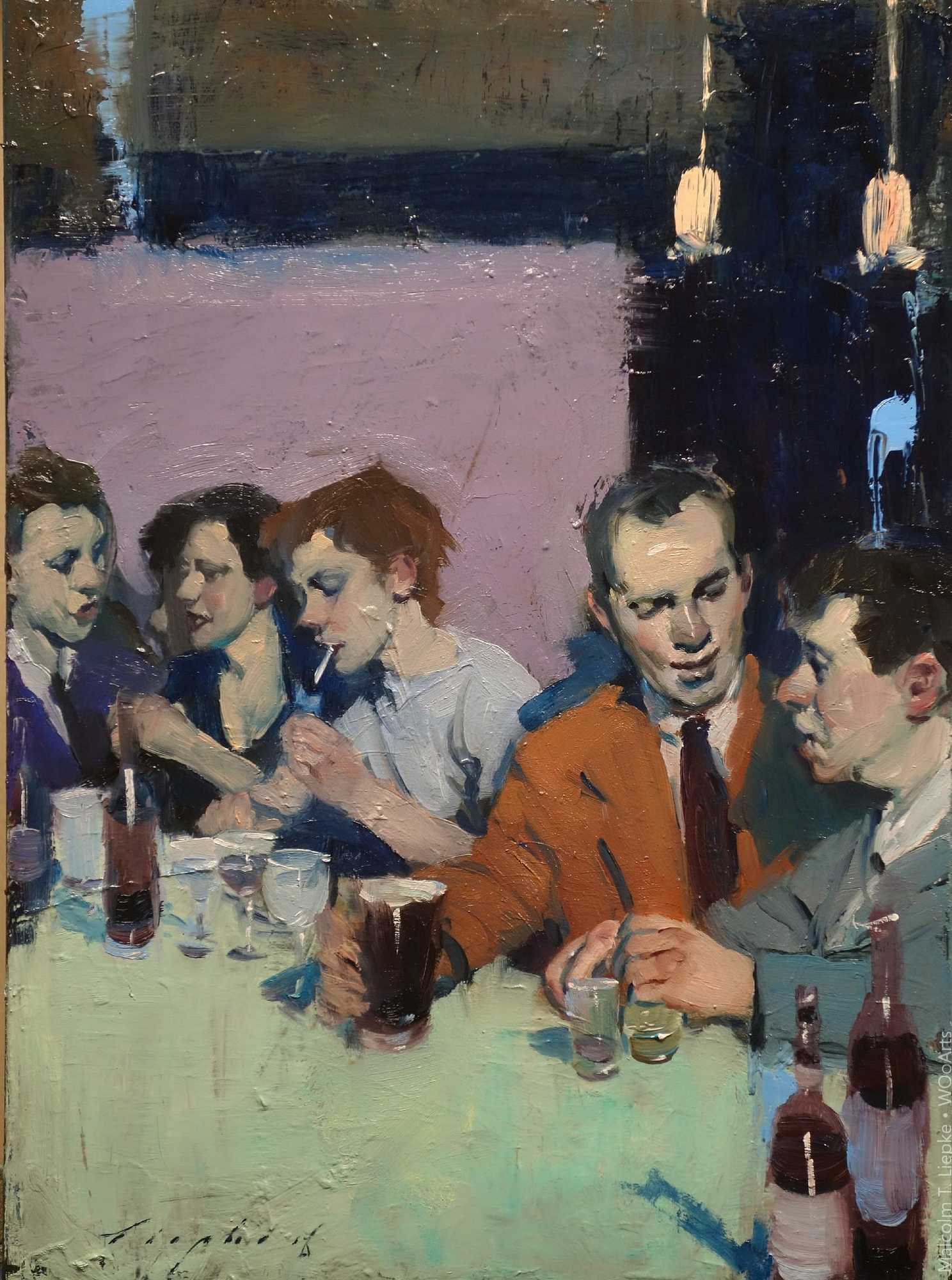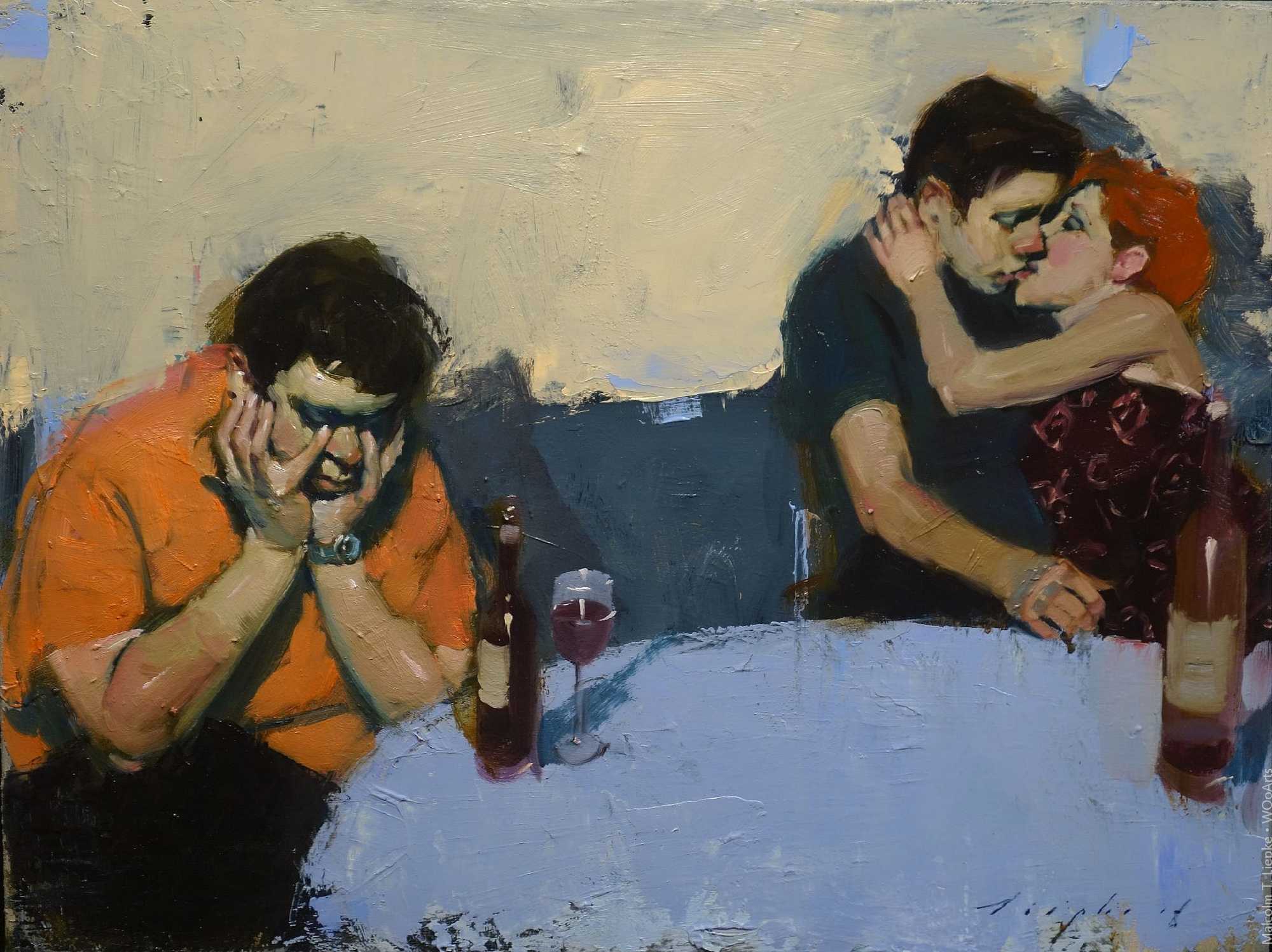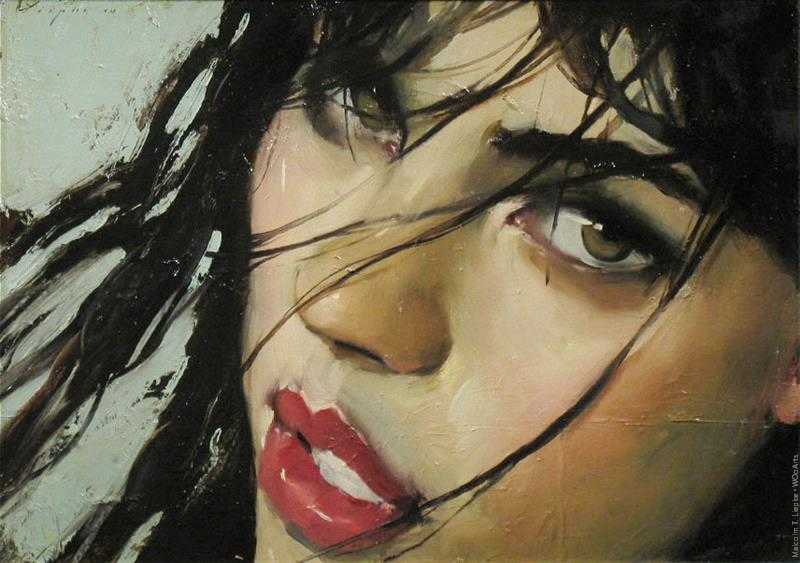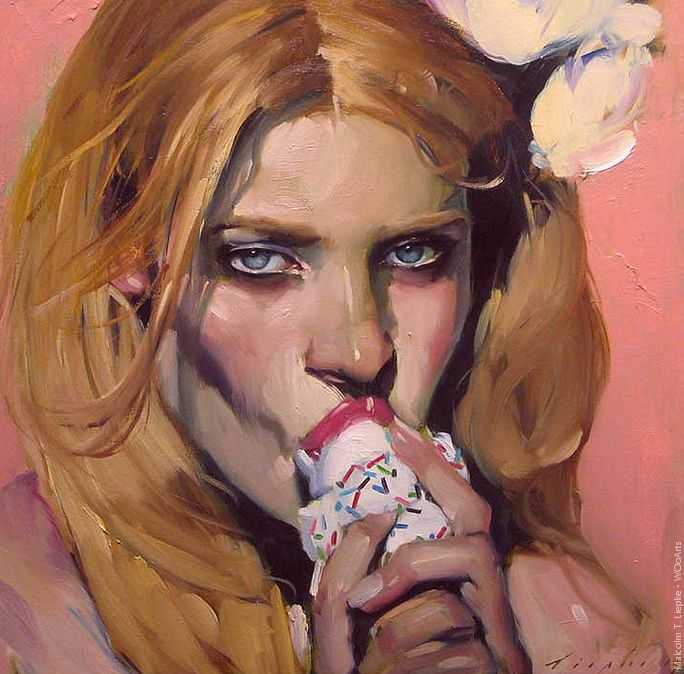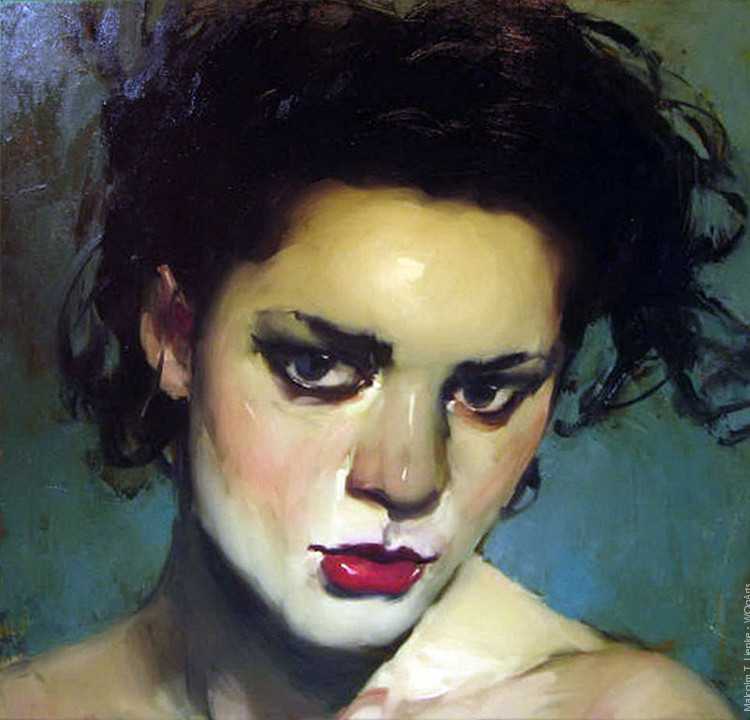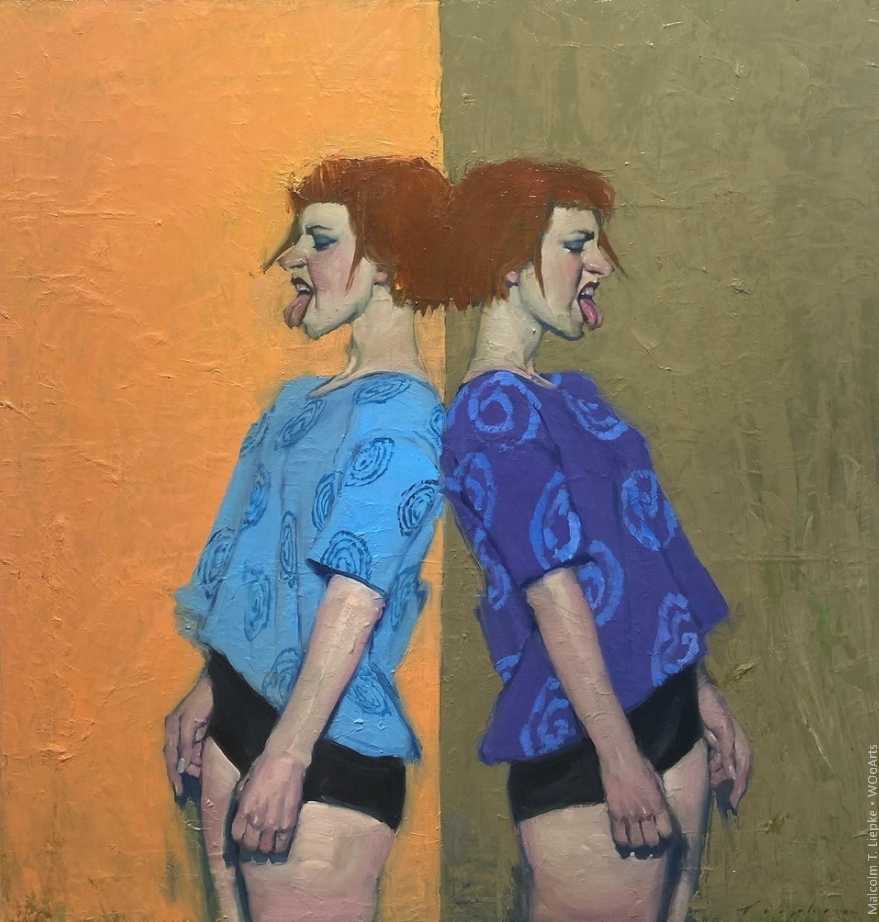Liepke favors portraits of ordinary women in glamorous contexts, producing voyeuristic nudes that are sexualized through a realistic lens rather than a pornographic one. Loose brushstrokes and dusty gray-green skin tones imbue his subjects with a fleshy sensuality, while simple gestures and expressions convey emotions. Liepke paints from photographs and works in a wet-on-wet technique, borrowed from artists like Sargent and Velázquez, in which layers of oil paint are built up without drying in between.
American, b. 1953, Minneapolis, Minnesota, based in New York, New York
Malcolm Liepke “Malcolm T. Liepke” was born in Minneapolis, Minnesota, and the unabridged honesty that comes with Midwestern roots shows up in his work. Liepke is an unapologetic realist, who paints with a smoking brush.
His images, these freshly minted portraits of women, have evolved into a patented cocktail of sensuality and draftsmanly stylishness: definitely PG-13, as much for what comes through the surface as what’s on the surface. To depict loaded emotions, Liepke works with a loaded brush, making bold, lush calligraphic strokes that set off faces, figures and fabric, particularly in the new work, against a painterly backgrounds.
Liepke remains at one cool remove from his subject, making no judgments, just observing and recording, yet he manages to bring so much excitement to his scrutiny of light and shade on the exposed flesh and features of his women – and that adorable baby – the creaminess of the paint seduces the viewer into believing not much else in the room is worth looking at. We become rapt, hopeless voyeurs in the thrall of the artist’s muses.
Liepke’s true gift, his real magic, however, is a talent for revealing something more, something evanescent: the inner life of his subjects. The artist’s primary goal is to capture emotions that vanish before they can be named or tamed. No wonder Liepke’s bravura paintings can be found in the permanent collections of the National Academy of Design, the Brooklyn Museum, and the Smithsonian, as well as in the private collections of celebrities from Barbra Streisand to Donna Karan. ─ source: tellurideinside.com | Susan Viebrock. March 4, 2010. Fine Art.
He studied at the Art Center College in Los Angeles but encountered significant obstacles in pursuit of his artistic vision. He hungered for ‘classical’ training rather than the conceptual ideas being taught. He moved to New York and began studying artists, such as Velasquez, Whistler, Chase, Vuillard and others. He says, “I learned color and composition and technique. I realized that their work was my kind of work.
They were my heroes, so I became their student.” Liepke’s first one-man show was held in the mid 1980’s followed by twelve more sold-out exhibitions from New York to London to Hong Kong. His work is now in the collection of the Smithsonian Museum and the Brooklyn Museum and he is considered by many to be one of the country’s leaders in the resurgence of figurative painting today. Liepke’s themes in human terms are often very particular to solitary moments, either in sensual pleasure or poignant loneliness.”
Good read:
Oil Painting | Malcolm T. Liepke: The Emotional Connection in Figure Paintings
Malcolm T. Liepke attributes his success with his figure paintings to making art that is both personal and universal. “I see a girl with her head a certain way, and I find it telling, emotional, and I want to communicate that certain truth,” the Minneapolis-based artist says. “That truth or emotion makes us feel less alone, more human. Everyone goes through life with their own problems, but we live in a pretty universal world. I’ve found that the more personal the piece, the more people connect with it.”
Liepke paints only the subjects that interest him, and he works in the most time-effective manner possible, maintaining some 20 to 30 figure paintings in progress at once. While maximizing his output to the galleries, his approach satisfies his desire to work loosely and spontaneously, making every brushstroke count.
Finding the Right Subject
To find his subjects, Liepke simply looks at the people around him. He takes photos or makes drawings of the ideas that strike him and then pins them to a large wall in his studio.Occasionally he hires a model to pose but tends to rely on his photos to save the time and expense of posing. He turns to his imagination for the interiors, explaining, “I want to be free to do what I want.”
The artist describes the photos and sketches as merely a starting point from which he can make changes in the hair or clothes of the figures to suit the piece. He does, however, retain the distinctive features of the individual in his references. “You can’t make up features,” he explains, “because the people will look cartoonish.”
Creating the Composition
Usually, the artist combines several ideas from the wall into one composition. “It’s too time-consuming to thumb through a notebook or make a storyboard, so I just scan the wall and start combining several ideas,” he says.
Liepke then makes a thumbnail drawing in graphite to play with the composition, moving elements around to experiment with different combinations. Next, he blocks in the sketch with oils on canvas, creating a full-spectrum layout.
The figures are rough at this stage, but he has established the overall feeling in terms of both color and composition. To Liepke, this is the most critical stage of the process: “After I block in a painting, sometimes it will paint itself. I’ve decided the attitude of the piece, and I know whether or not it will work. If the painting fails, it does so at this level.”
At any given time Liepke could have up to 30 human figure paintings at this stage scattered around his studio. “If I get stuck on one painting, I can go on to another, then I come back to it later,” he explains.
Working Wet-in-Wet
When returning to a painting, Liepke first lays a glaze of roughly equal parts of linseed oil, clove oil and poppyseed oil over the color block-in. This process, which he refers to as “oiling up,” allows him to work wet-in-wet. (He uses the mediums throughout the painting process to slow the paint’s drying time.) Typically he builds the flesh tones and refines the face and hands. If he, again, feels inhibited in trying to finish the painting, he sets it aside and turns to another using the same process of “oiling up.”
Working on a wet canvas is critical to Liepke’s approach to painting figures, which he modeled after the techniques of his heroes, John Singer Sargent and Velázquez being chief among them. Liepke especially admires Sargent’s virtuosity in painting with a loaded brush, wet-in-wet, and Liepke’s careful and nearly fully resolved layout of the composition ensures he will make few revisions while painting and retain the directness and spontaneity he desires.
He works loosely and aims to communicate as much information as possible in the fewest number of strokes. “Learning to edit, to keep loose, is a lifelong process,” the artist says. “In the beginning, it’s natural to noodle everything to death, but slowly you can learn to say more with less, to make sure each brushstroke has meaning.”
Like Sargent, Velázquez employed color and composition brilliantly, but more than Sargent, the Spanish master captured a sense of the subject’s essential being. Traveling to the Prado, in Madrid, as part of a period of self-education he undertook after leaving the Art Center College of Design, in Pasadena, California, in the mid-1970s, Liepke came to view Velázquez’s paintings as the embodiment of everything he admires in art: The timelessness of the figure achieved through an objective and expert rendering of the subject’s features, clothing and setting.
Contemporary Painting
Despite Liepke’s close ties to past masters, he insists on painting contemporary people in their own time. Omitting details that would place a subject in the 21st century to make the images more universal, the artist often chooses themes of isolation and ambivalence—as relevant now as in the 17th century.
“It comes down to what your truth is,” he said in an interview for a retrospective of his work. “Heroes helped me express my vision of the world. I’m a figure painter, and I use figures to express what I want to say, to fit the statements I wish to make. I choose the things, large and small, from the artists I admire, to help me in the pursuit of human truth.”
Liepke’s painting surface is Claessens Belgian linen canvas, which he buys by the roll and stretches as needed. He keeps six varieties on hand, from rough to fine. For brushes, he favors Robert Simmons filberts in Nos. 1 to 22. His paints comprise about a dozen manufacturers, with Grumbacher, Holbein and Rembrandt dominating. He premixes his grays by combining yellow ochre or raw sienna with black and white, and he mixes all his colors with varying amounts of this gray. He also premixes some flesh colors.
“My color choices are pretty instinctual,” Liepke says. “I just look at the work of artists I admire and try to learn from them. It’s about personal taste, but I tend to like a yellowish, grayish green for the flesh tones to play off the oranges and pinks.”
As Liepke’s work has matured, his palette has shifted from darker values to a bolder and more diverse selection of colors. One explanation is simply that he moved to a brighter studio, but the artist also wanted to prevent himself from becoming formulaic so he modified his color selection accordingly.
His painting process, despite—or perhaps because of—the careful planning in the beginning, allows intuition to dominate. “When I’m in that zone, it’s child’s play, although on some deeper level, I know what I’m doing and why,” he once said. “The biggest thing about my art is getting my mind to open to the point where it comes tumbling out. I can’t think about brushstrokes. If I think too consciously, my arm freezes up.”
From Past to Present
Before he turned to fine art in the mid-1980s, Liepke worked as an illustrator for such clients as Forbes and Time—a career that, despite its success, was touched by disappointment. “There’s no great art by committee,” he says. “I left illustration because I was tired of the compromise, of being a square peg in a round hole. I would know a painting was finished, but the art director would decide what was right or wrong with it. It was too much of a fight, and I knew I was in the wrong profession.”
Clearly, the move to fine art has fulfilled Liepke on many levels. He describes himself as emotional and says that his strength comes from the emotional impact he pulls out of the work.
“Although I do think about the things I am expressing, I try to make it as direct as I can—I try not to get in the way of the emotions,” he once said. “In essence, I believe that no matter how alone we may feel in the world—how we imagine we are experiencing things in a vacuum—we all share the same human experiences. We all have the same basic needs for connection, love and understanding. I try to reach those universal needs; it’s what’s primal in art. I try to say it through mood, color, atmosphere and texture. Bottom line: It’s the [emotion], and I just want to get it out. It’s difficult to express through words things that are so beautiful that they have no words. I can’t explain it. I have to paint it.”
About Malcolm Liepke
Malcolm T. Liepke is primarily a self-taught artist, having learned most of his technique by emulating the style of the American Impressionists and other artists. He has participated in numerous group shows, including U.S. Artists “Re-Presenting Representation” and the International Fine Art and Antiques Fair. The artist’s work hangs in several private and public collections, including those of the National Academy of Design, in New York City, and the Estate of Armand Hammer. Liepke is represented by Arcadia Contemporary (aka Arcadia Fine Arts), in New York City.
This article was written by Lynne Moss Perricelli, a freelance writer and editor in New Jersey.
